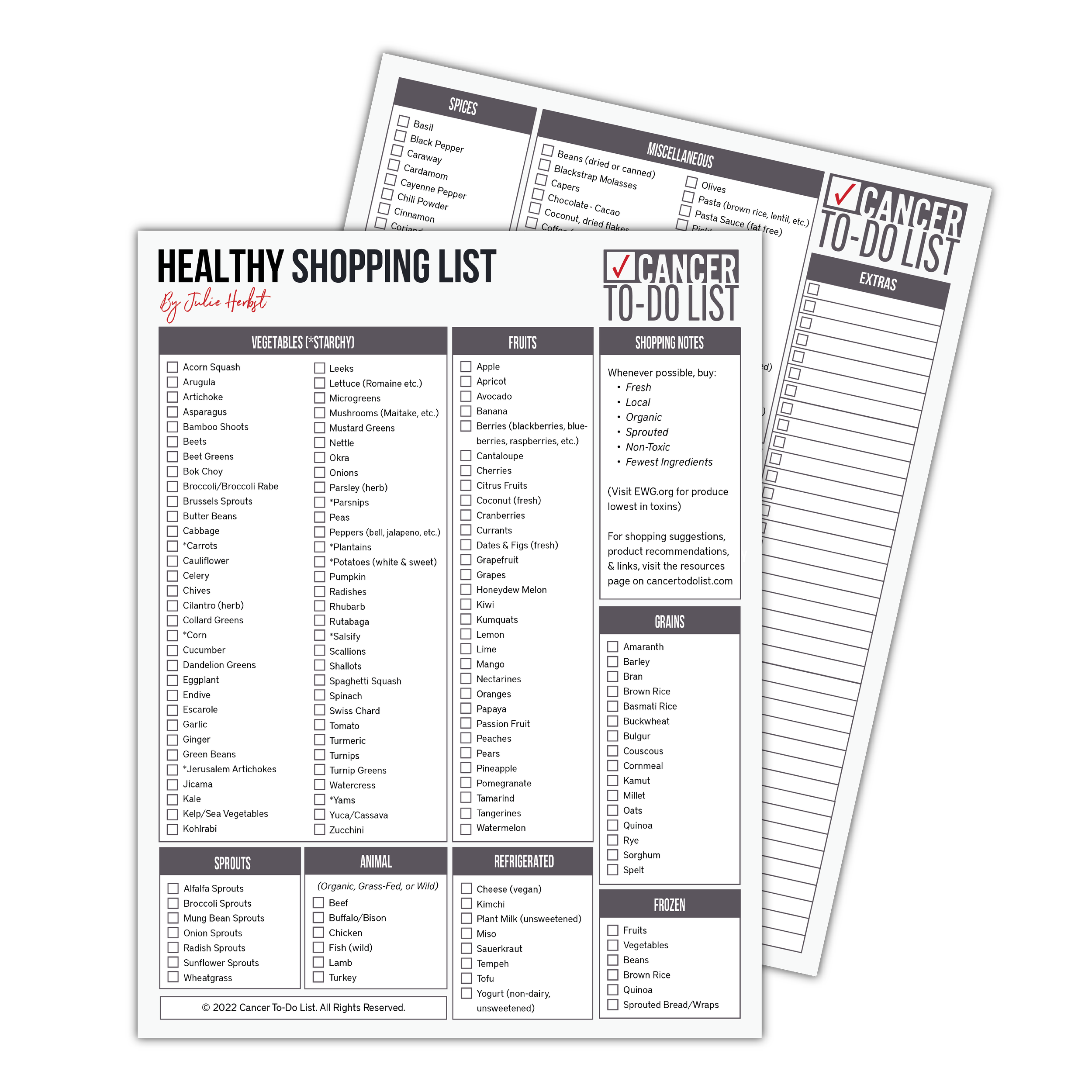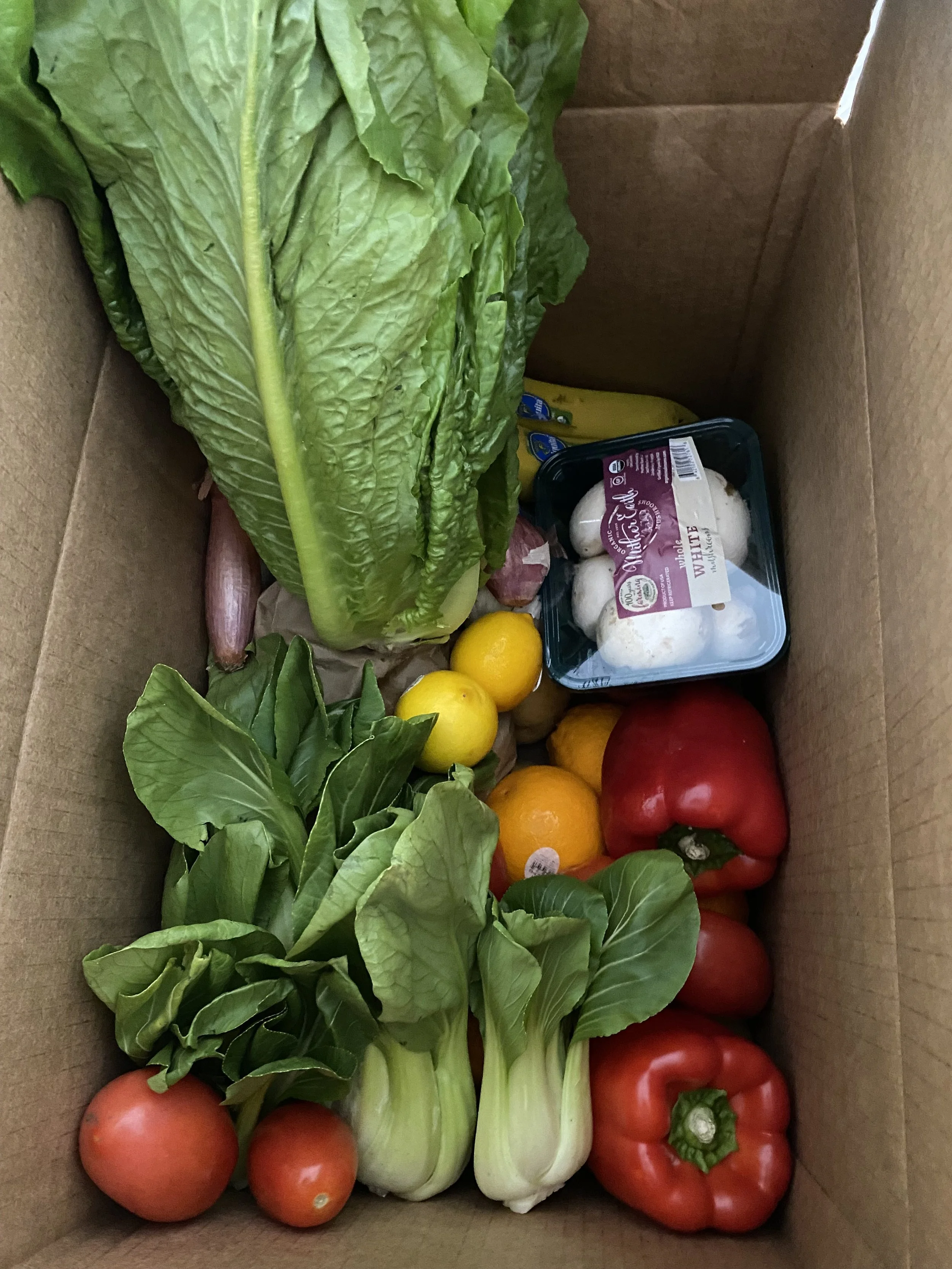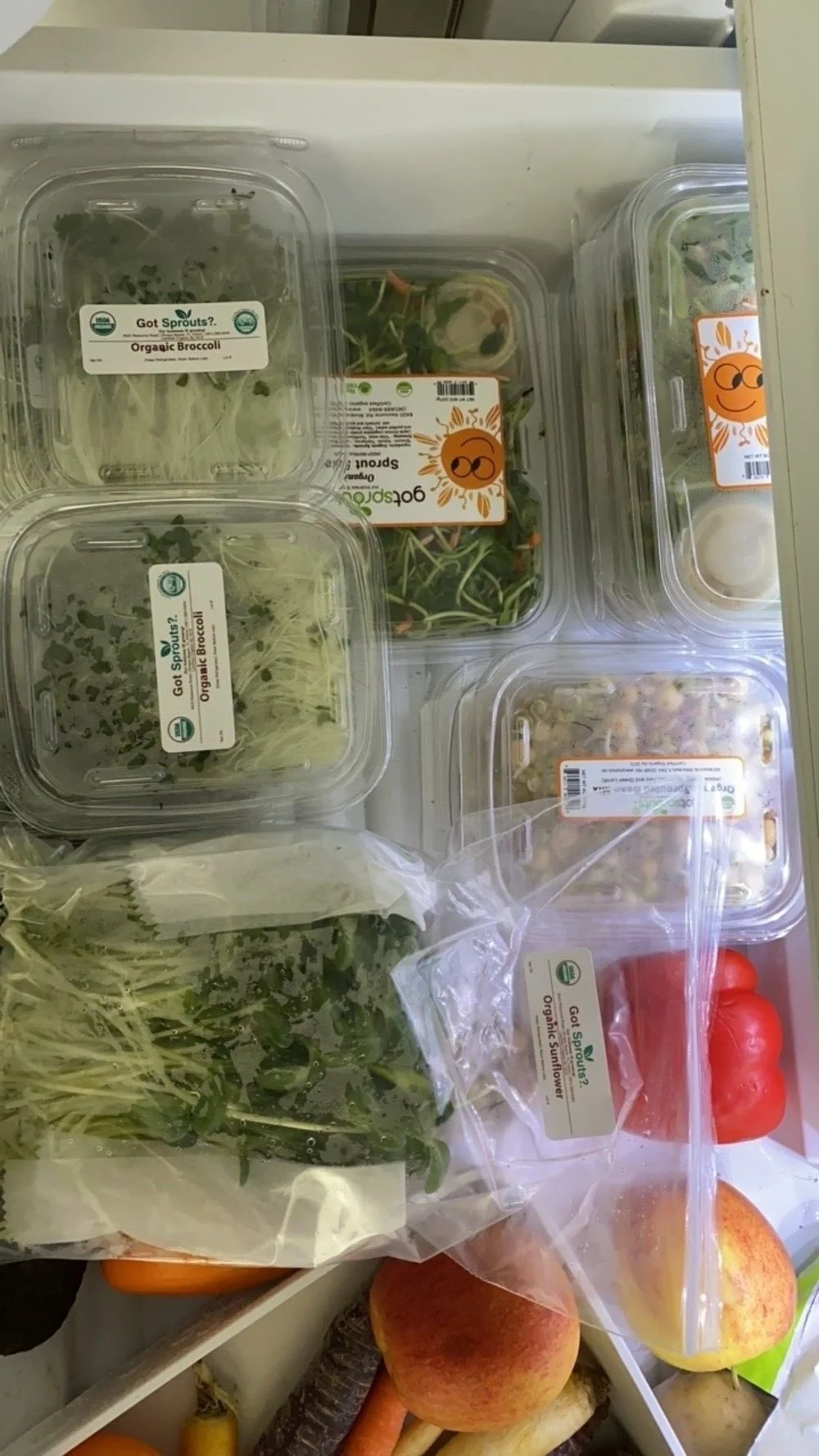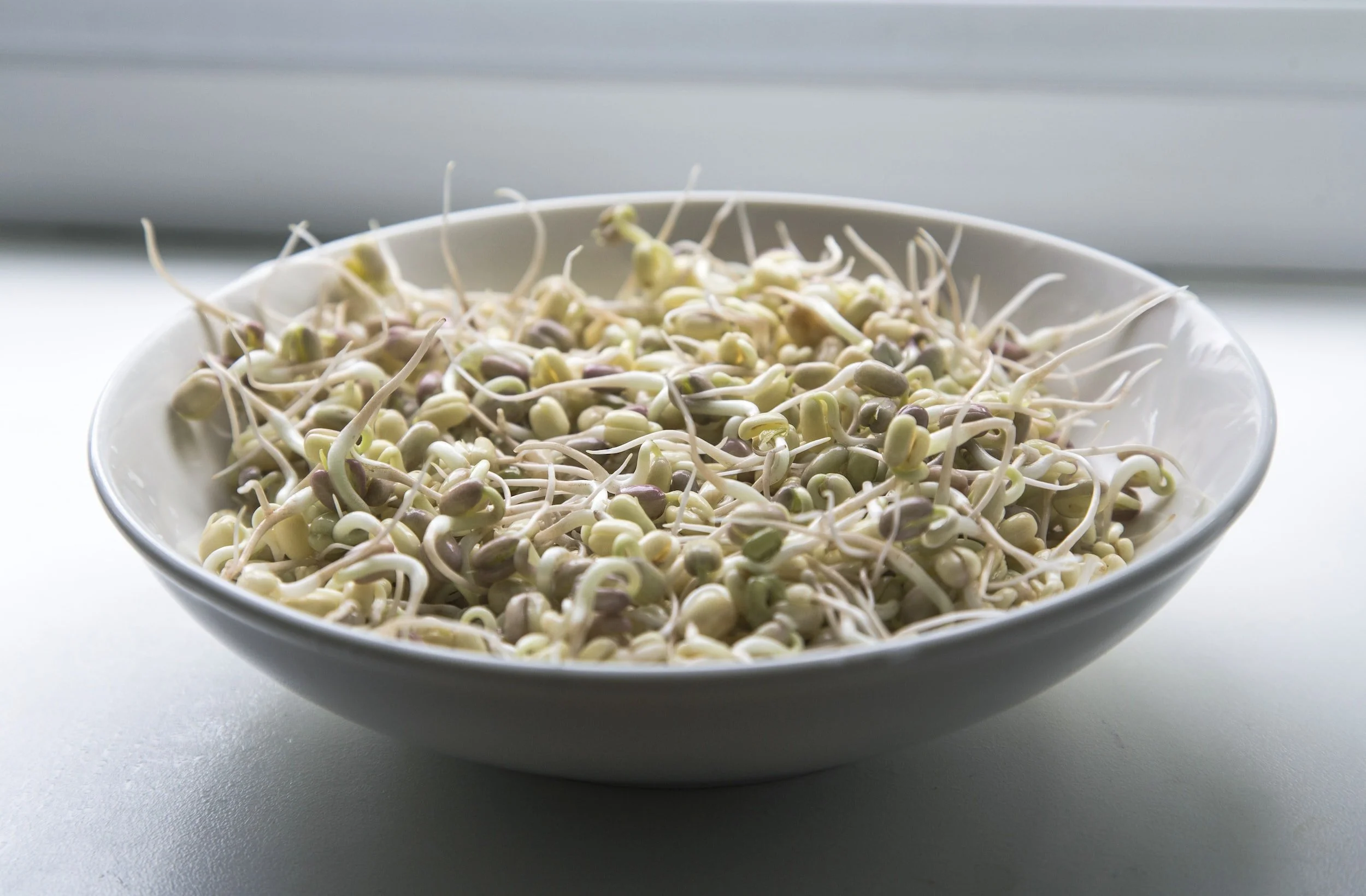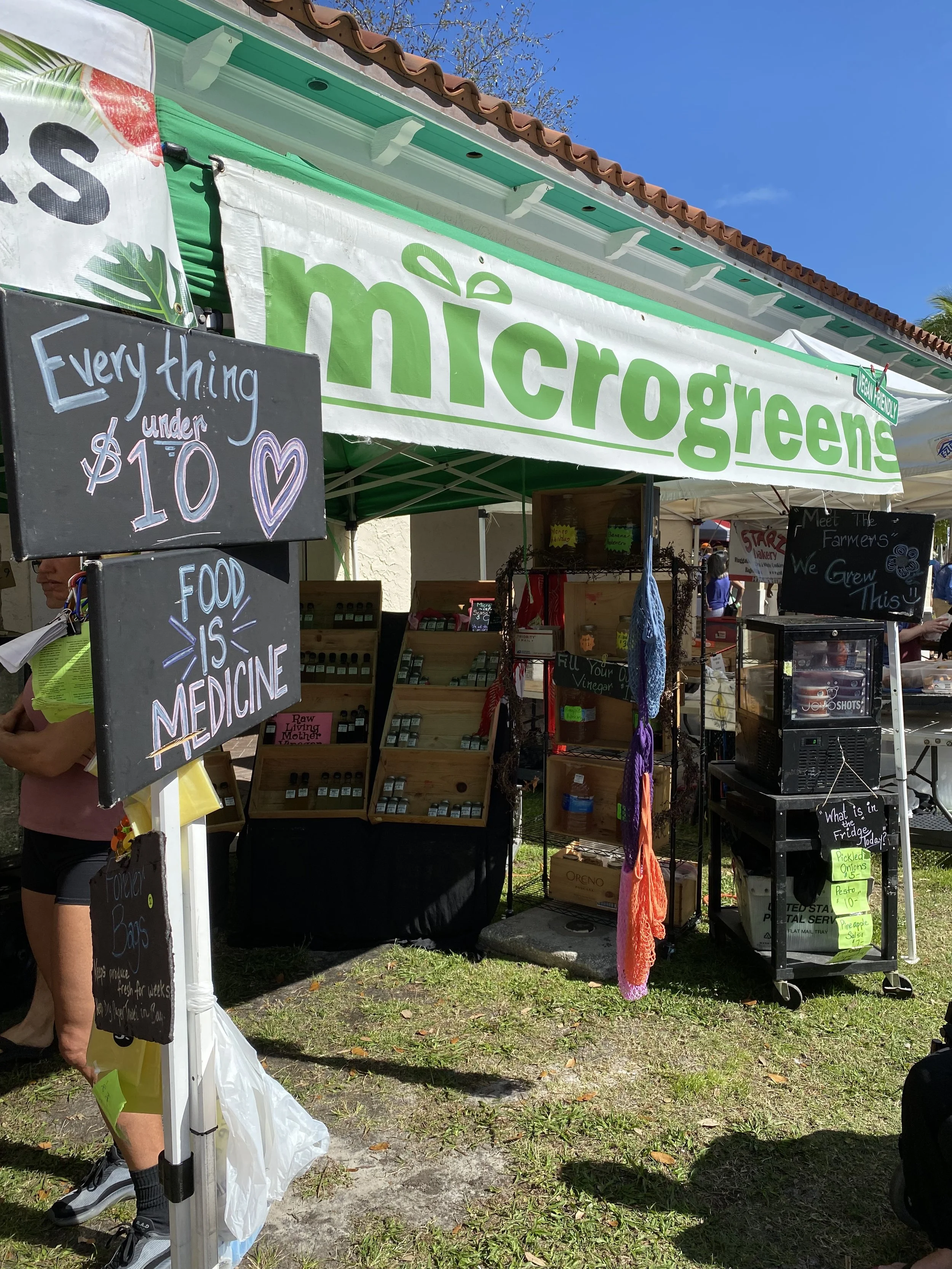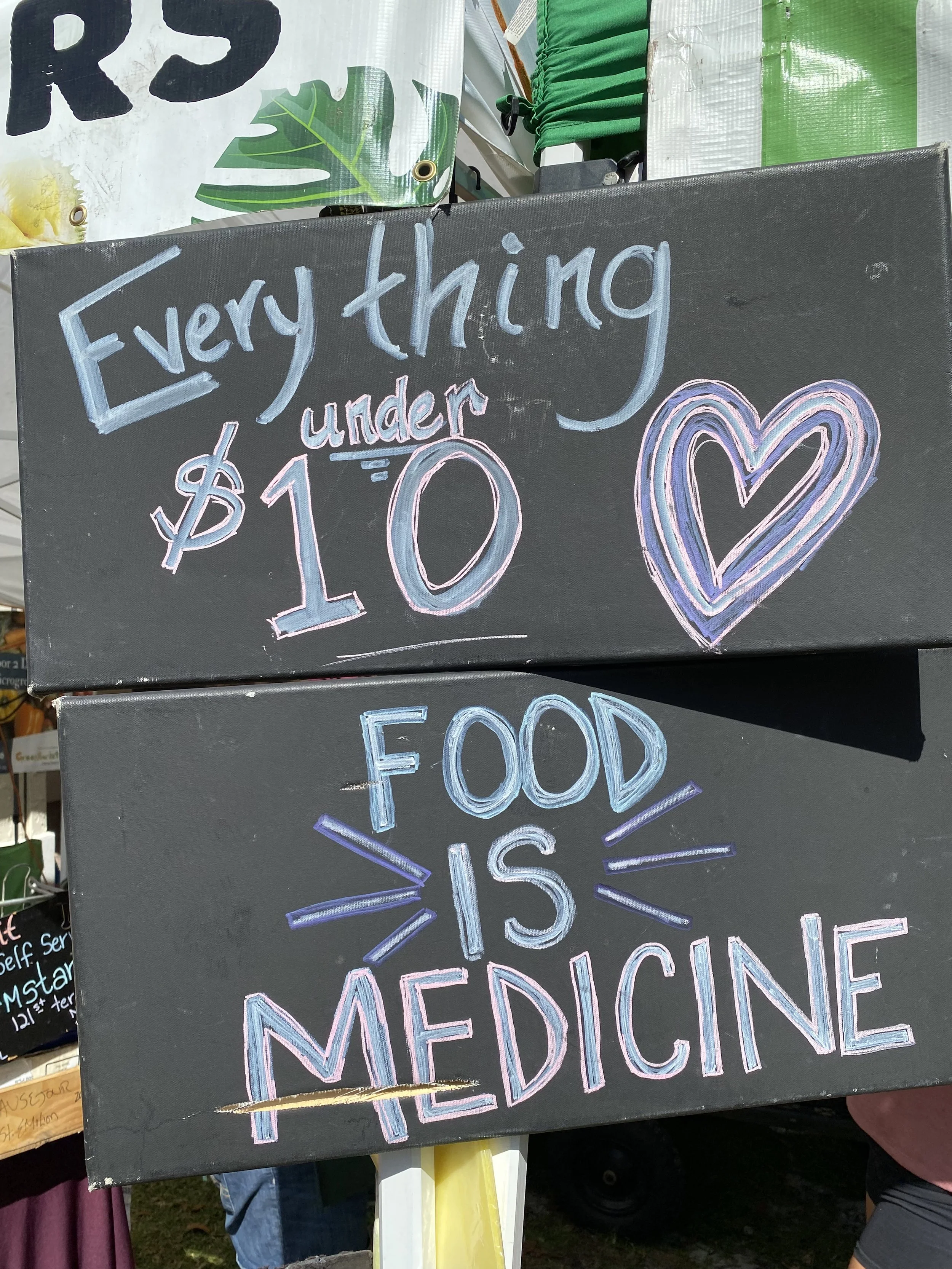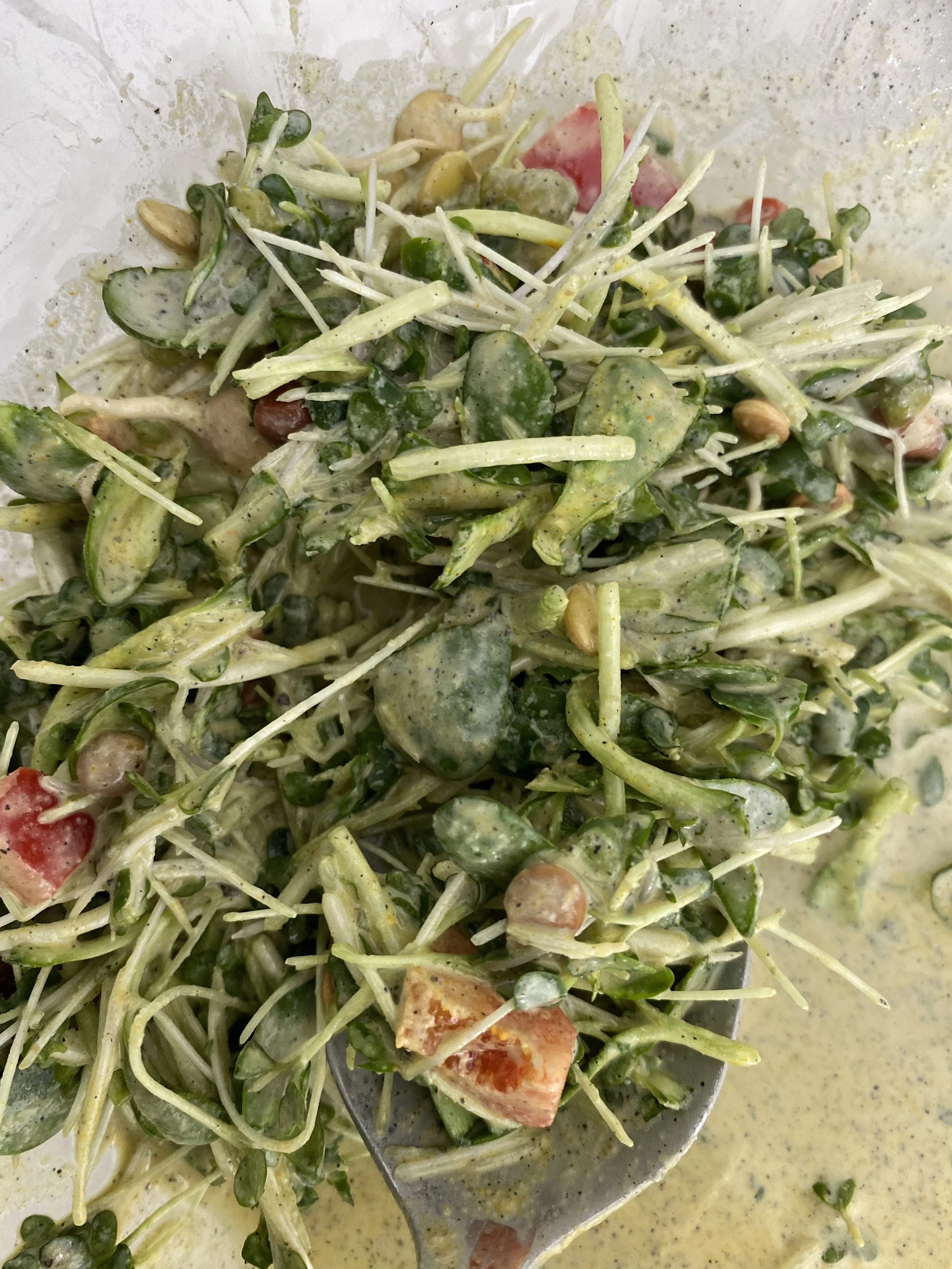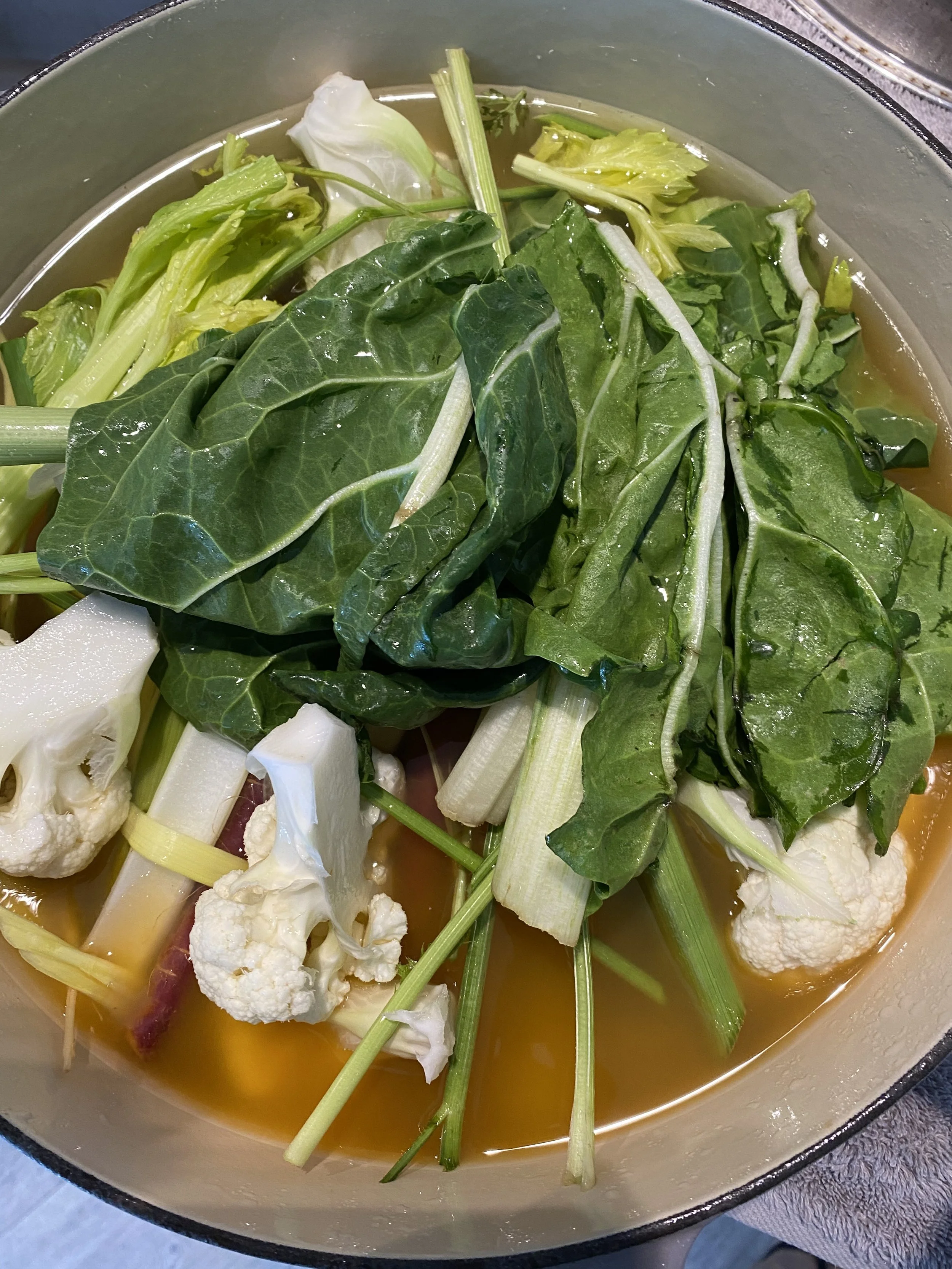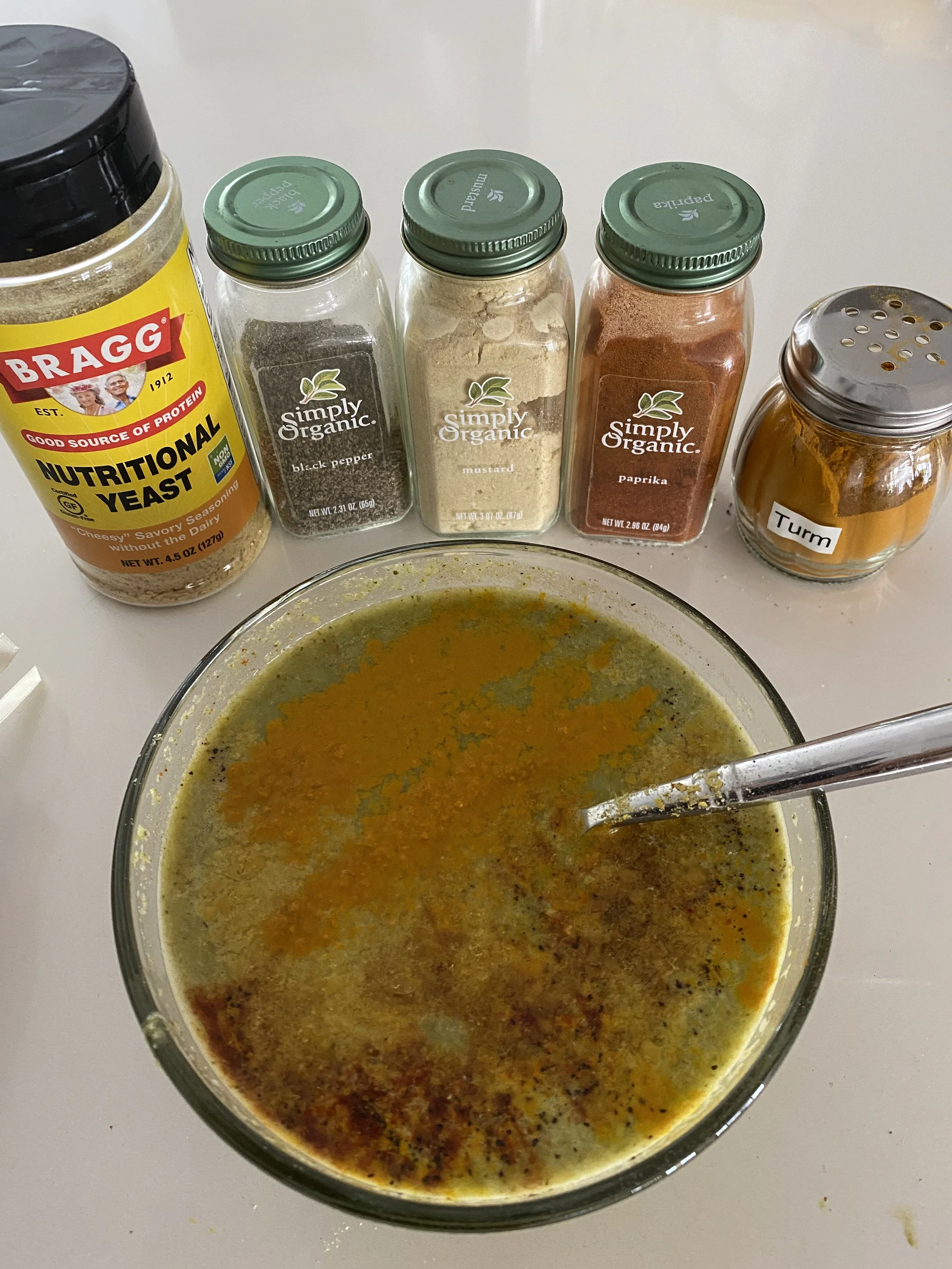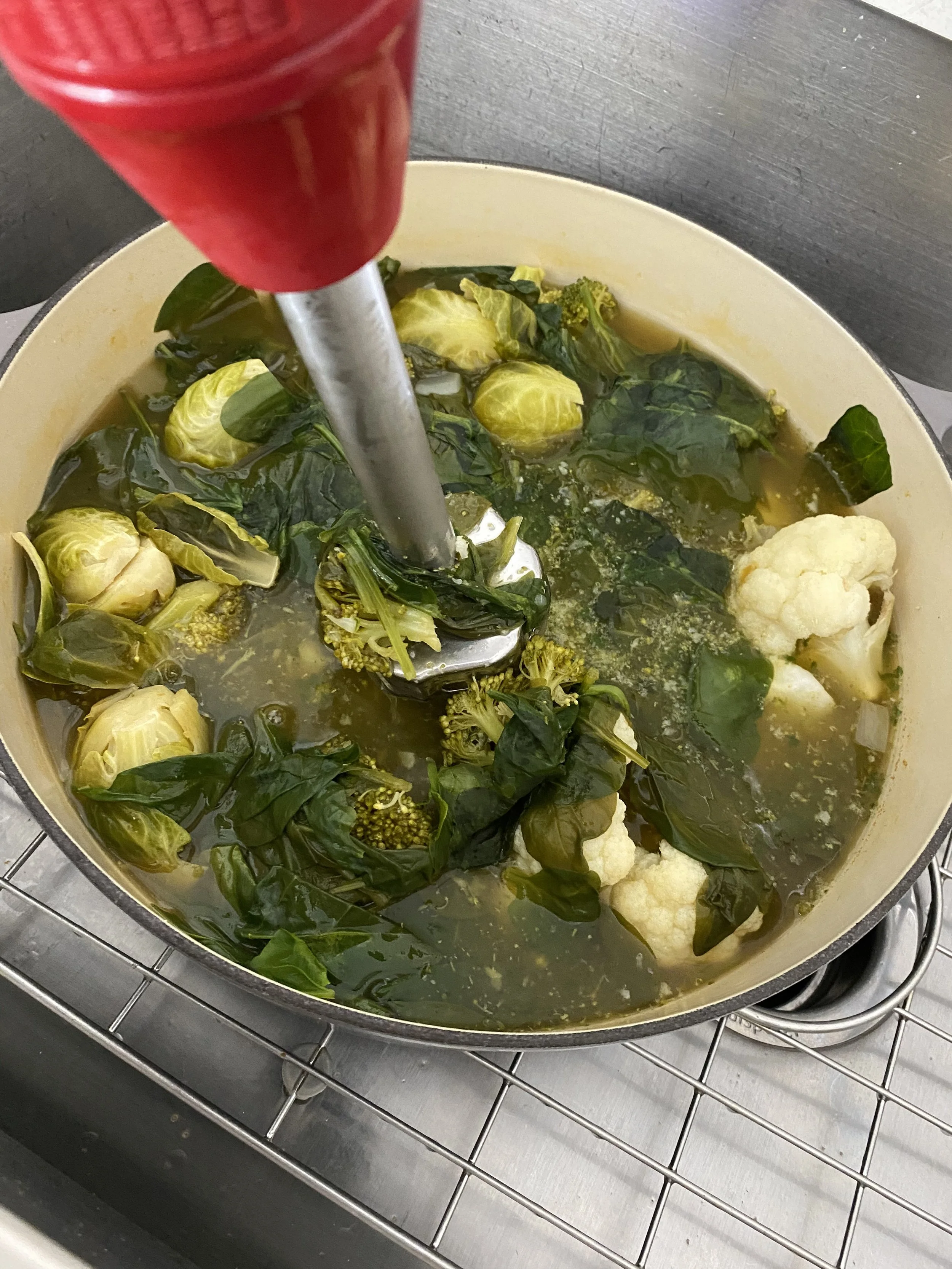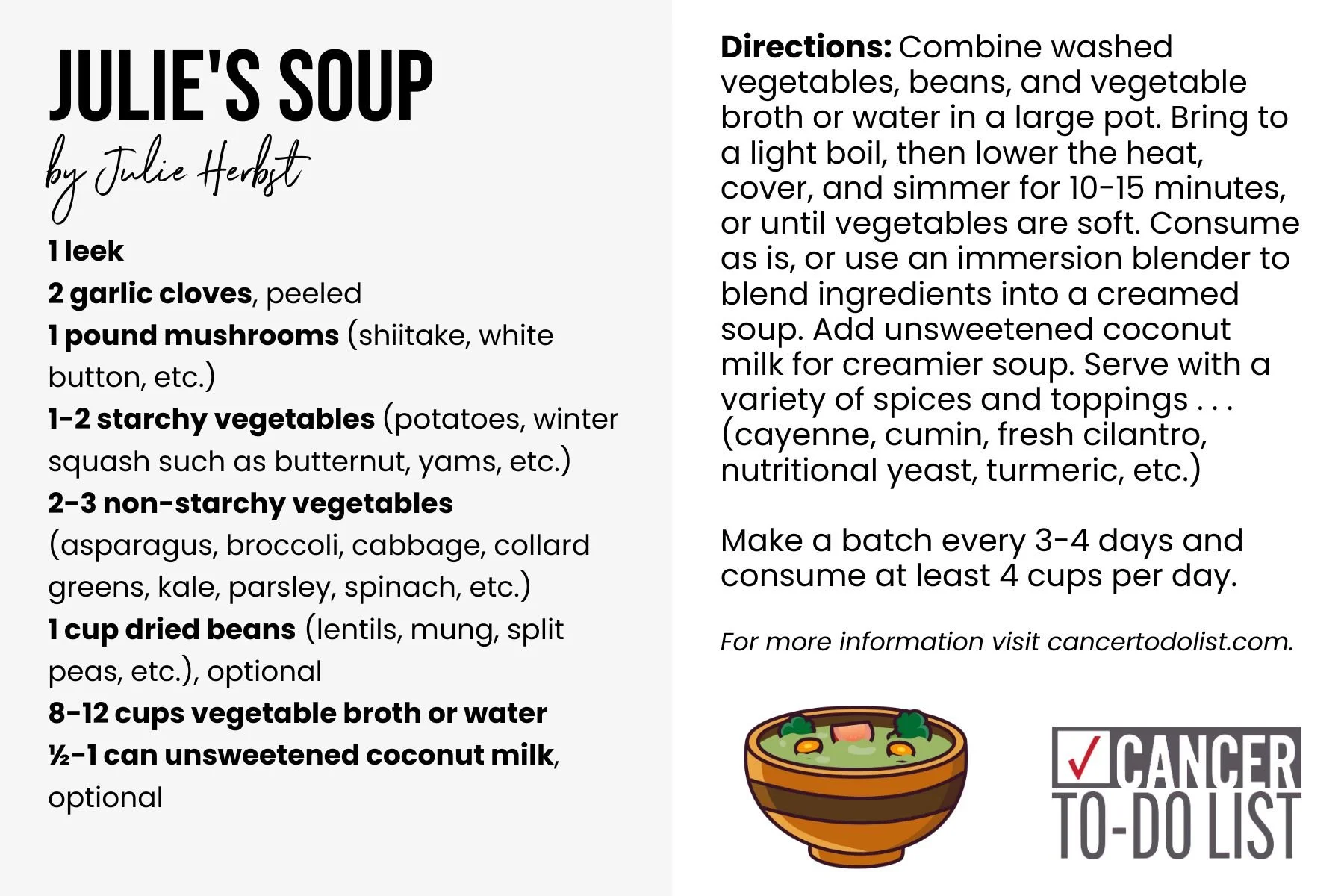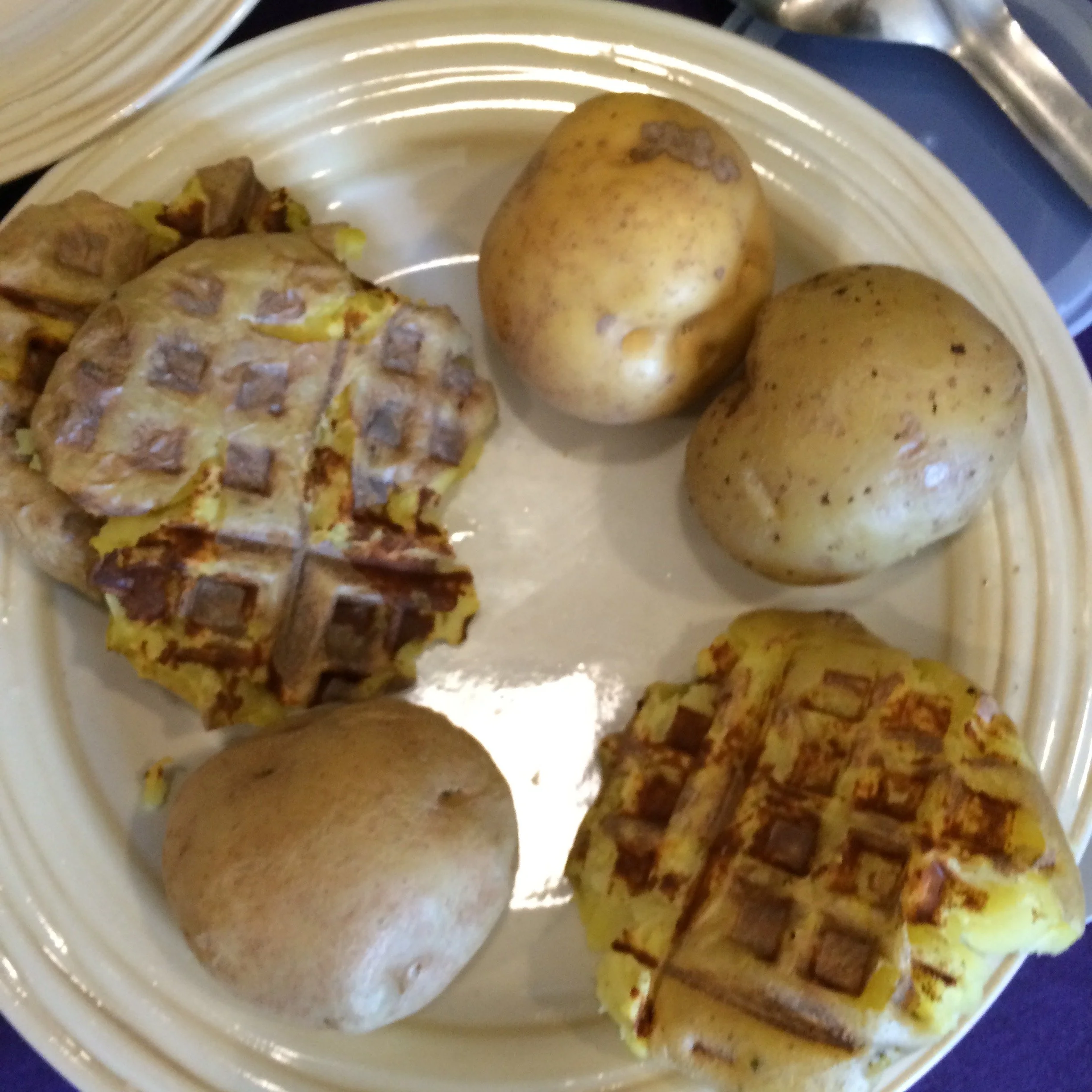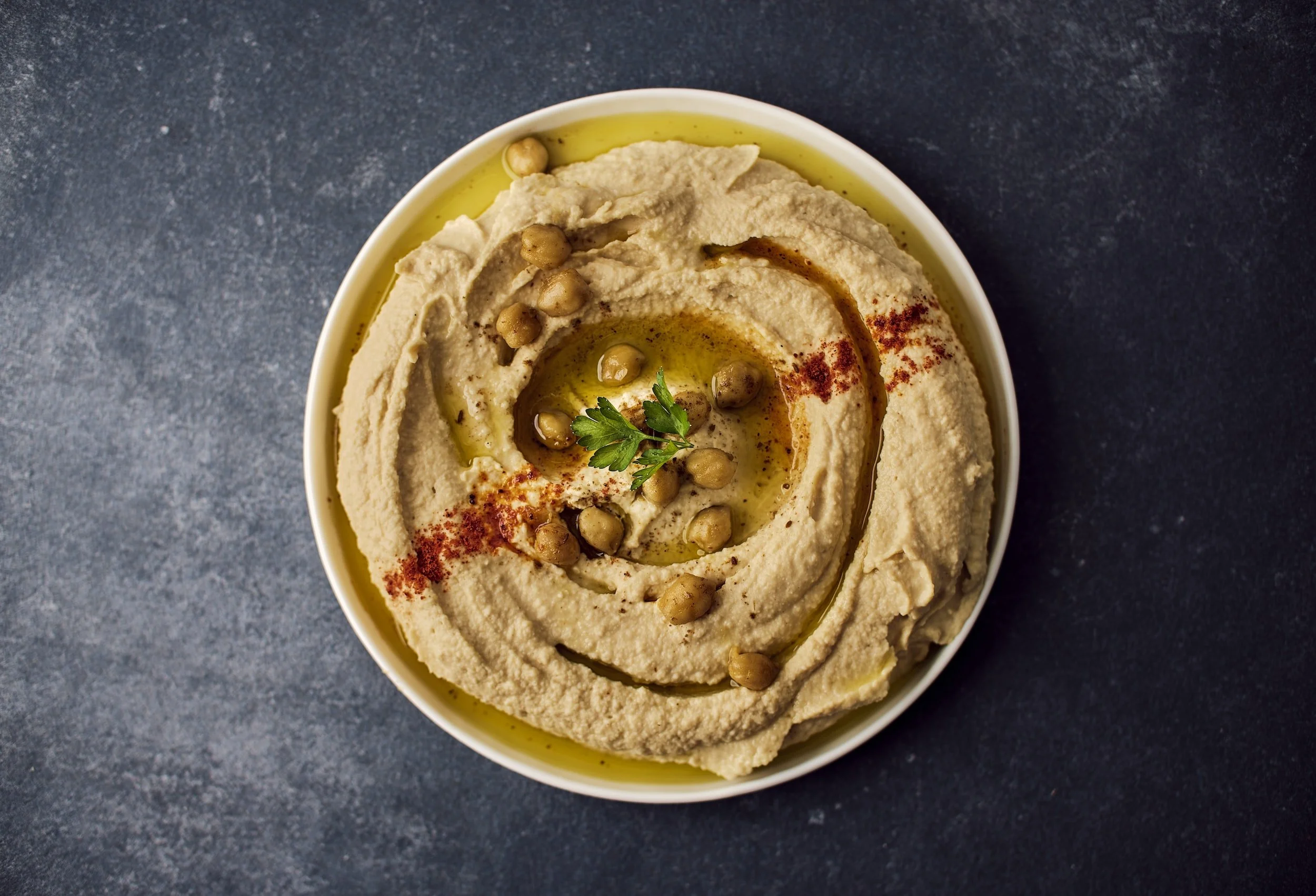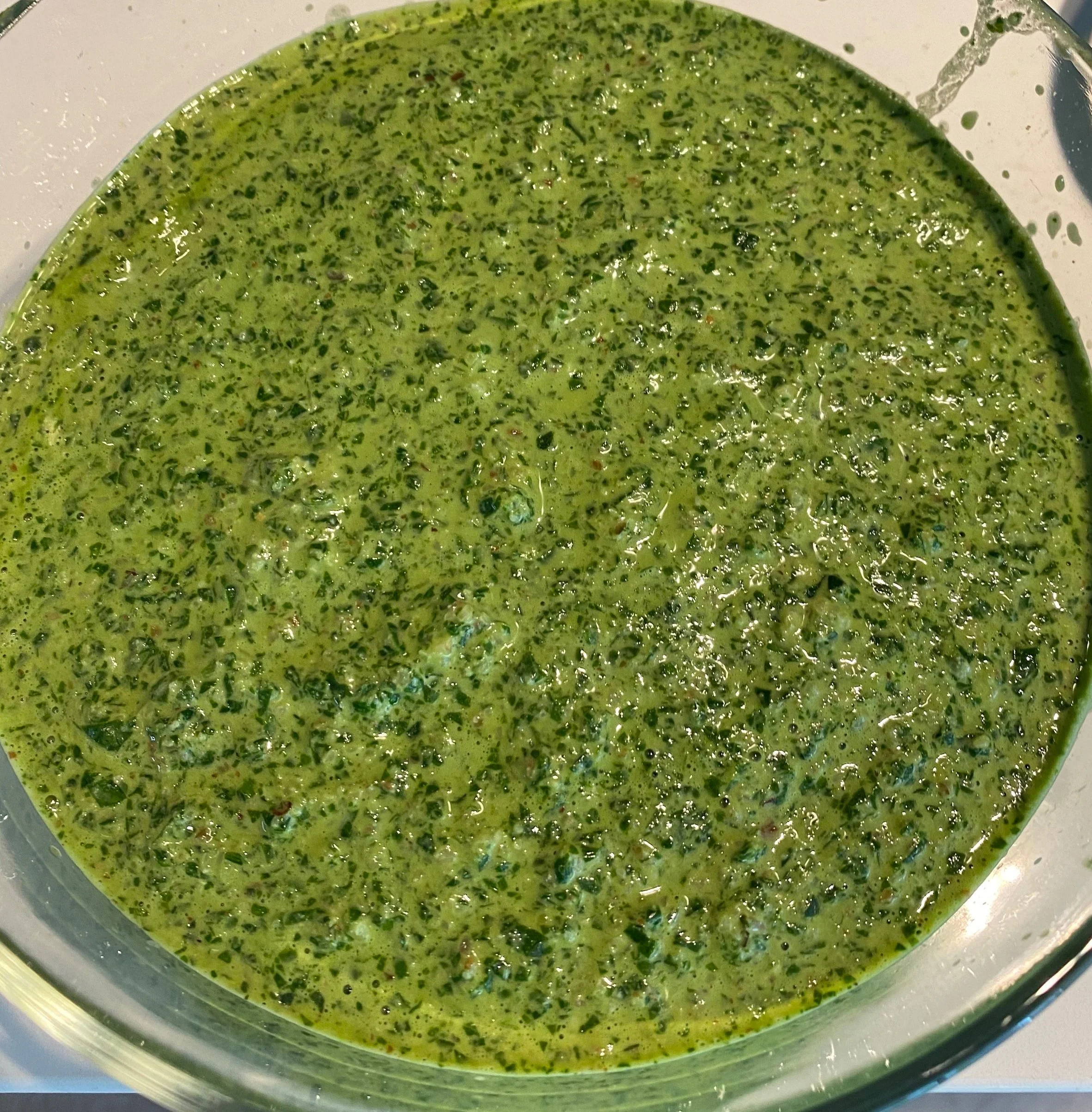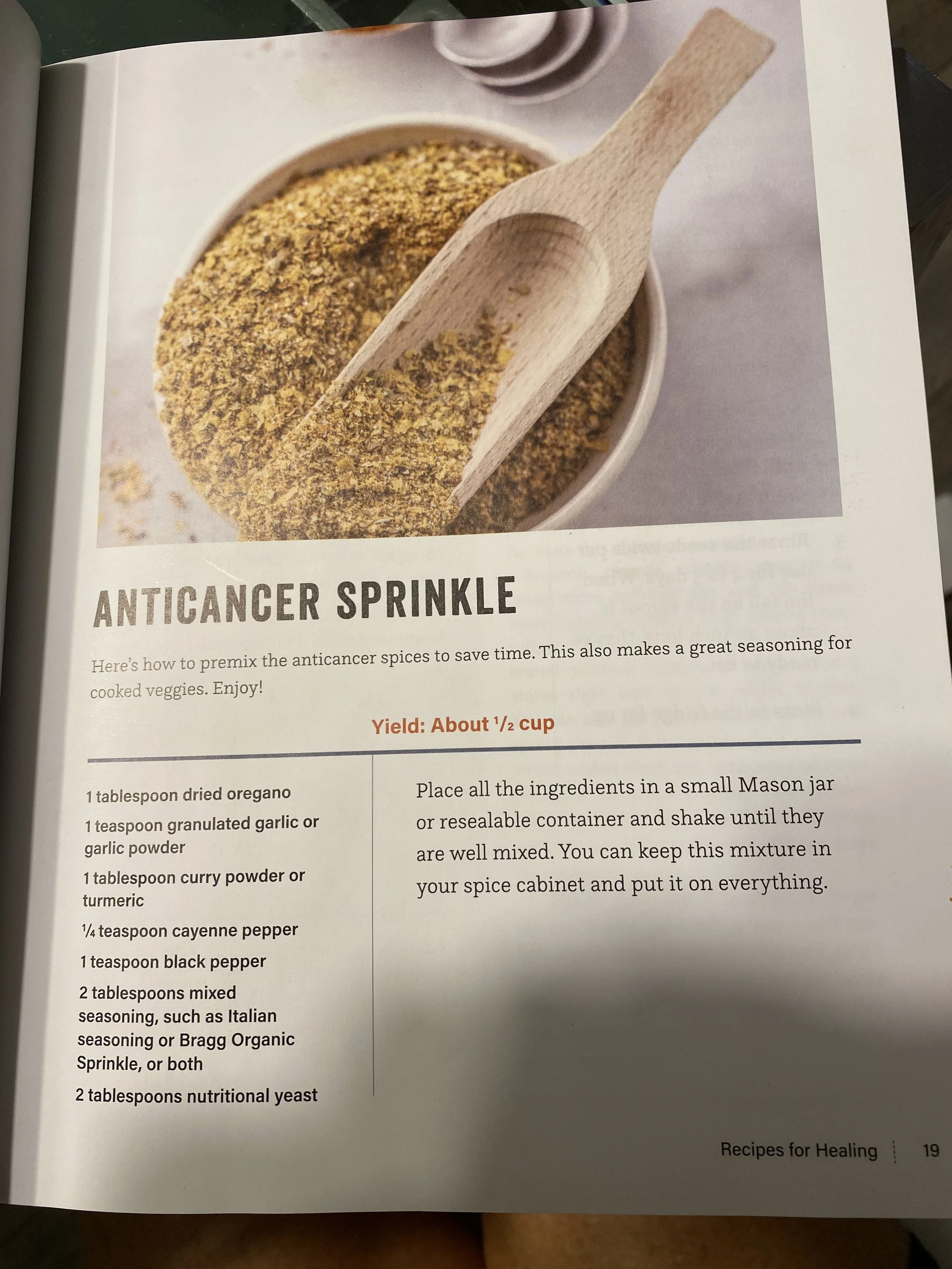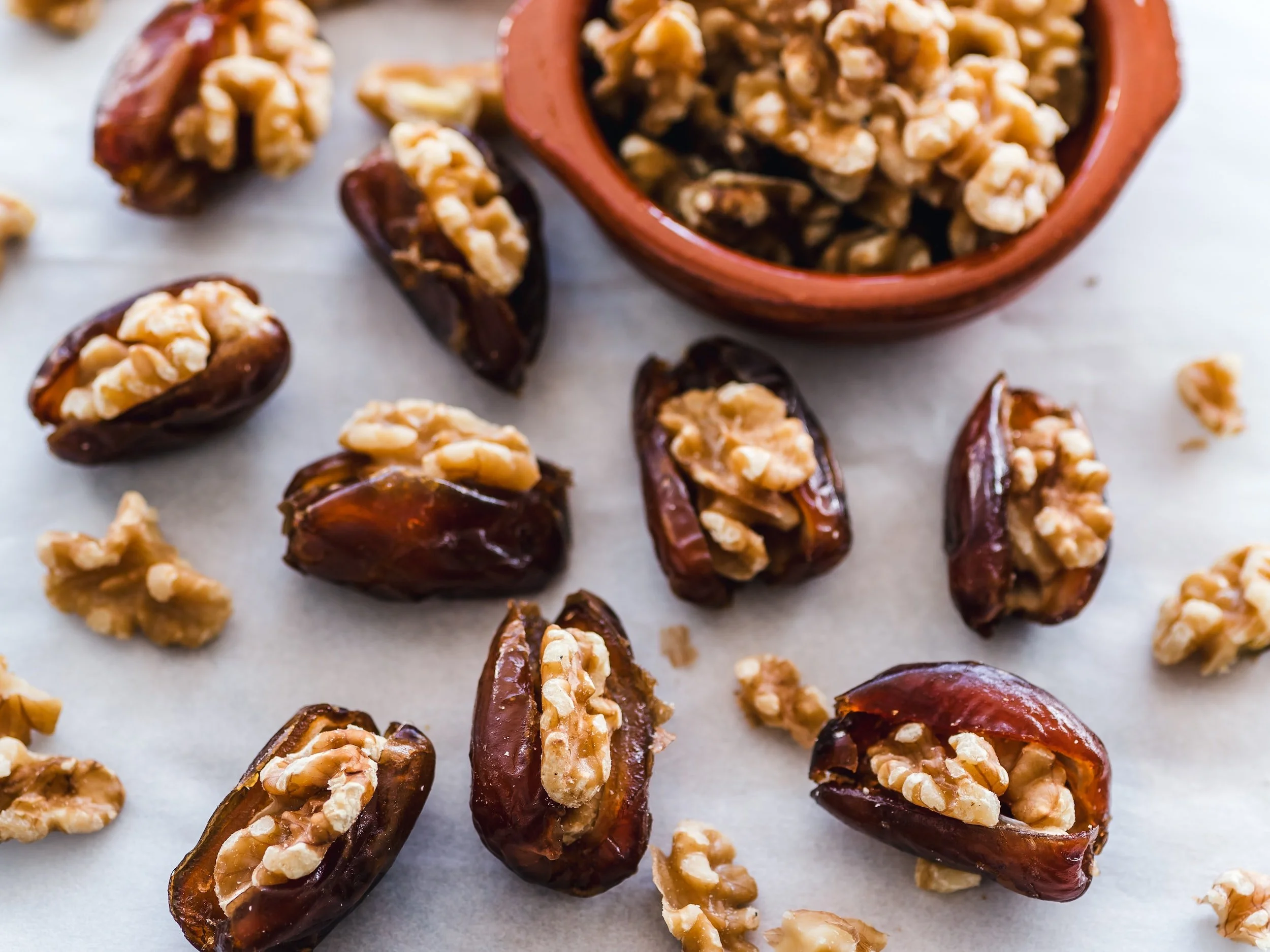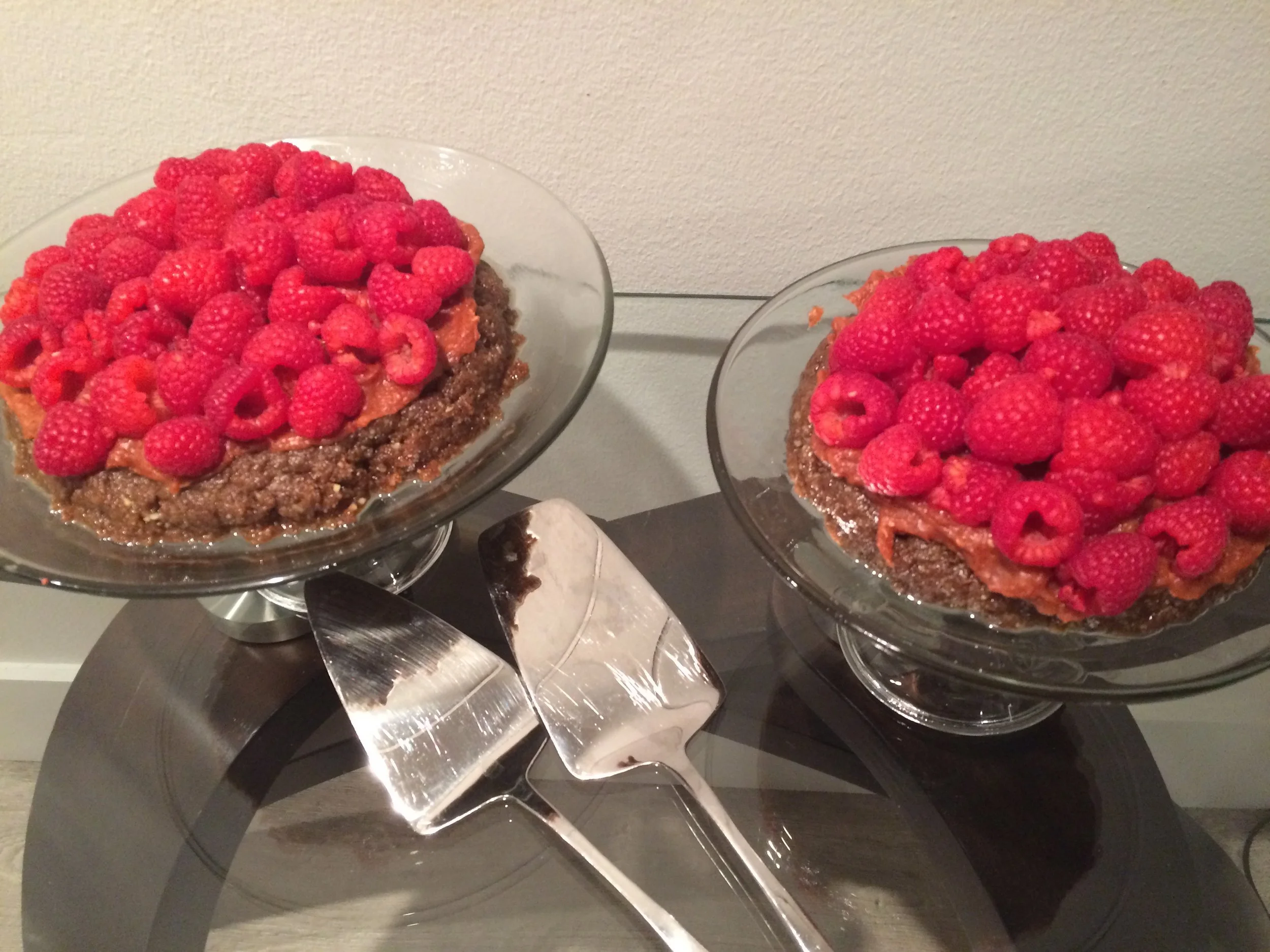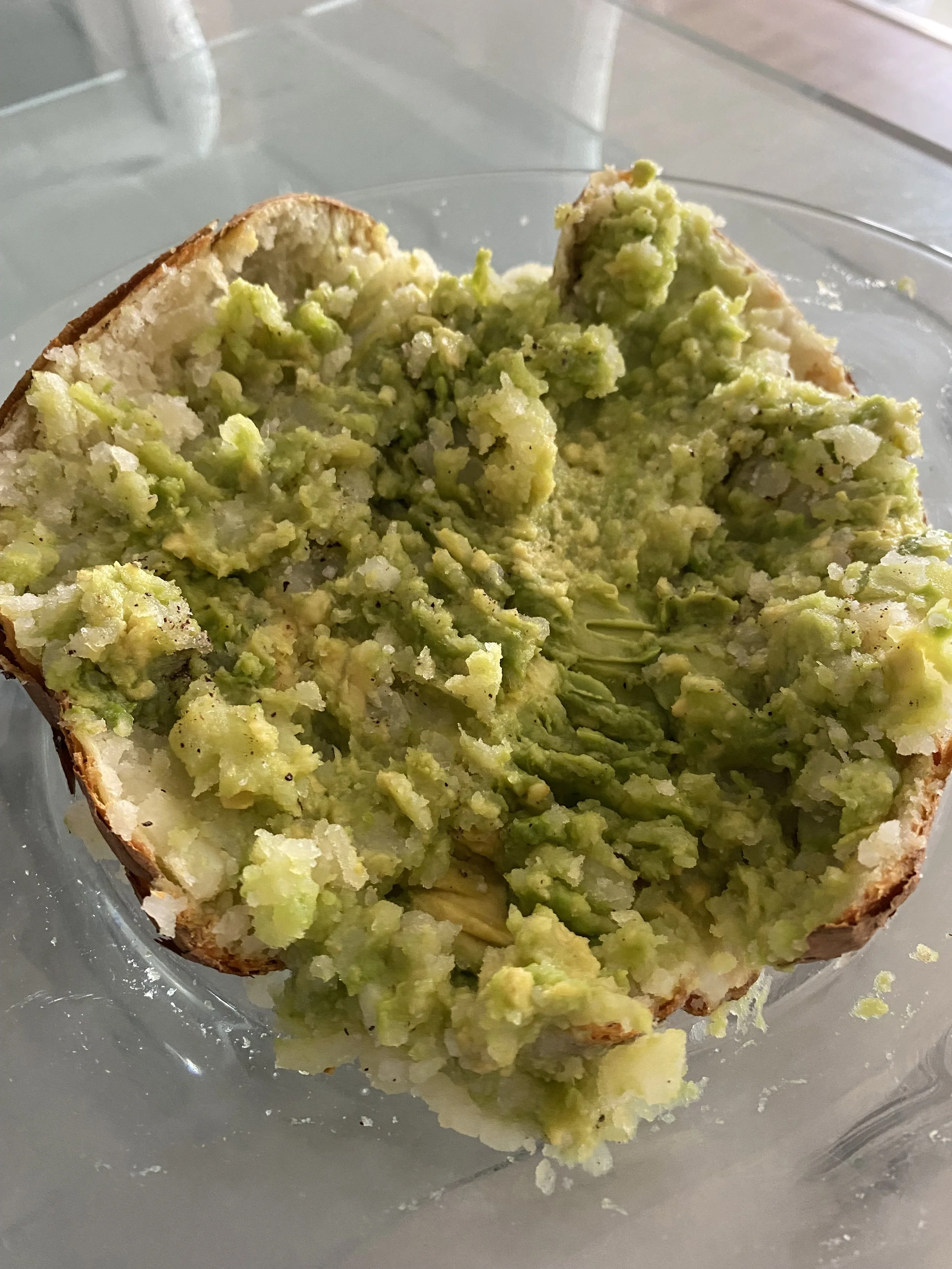The kitchen “treats”
Your kitchen can be your most valuable healing tool!
The kitchen can treat all diseases, including cancer! Many doctors agree that 75% of chronic disease can be prevented with good nutrition. For instance, there are thousands of studies showing that the more fruits and vegetables we consume, the more we dramatically decrease our risk of getting cancer and other diseases.
I share below how I set up my kitchen to easily support my new dietary habits, and how I keep meal prep and organization simple so I can stay on track with my eating. It was definitely an adjustment as I built a habit of healthy eating, but just like anything else, I’ve been able to get into a rhythm and my body thanks me! I certainly feel a difference if I veer off course of the habits I’ve chosen, but I just get right back on track. No one is perfect, but one thing is for sure - once you begin thriving in your health, you will love the way you feel! It is worth the effort!
-
Foods in your kitchen have the potential to “treat” diseases like cancer! Learn how I set up my kitchen to help us prepare healing foods.
-
Print out my simple shopping lists for healthier shopping. Find the most convenient local solutions for purchasing produce regularly. Prep foods for the week to make healthy eating more simple.
-
I have built my eating plan with ten categories in mind. This plan ensures that I eat all the healthiest foods and consume enough calories. Learn some basic recipes to start building your eating plan.
-
All whole foods are miracles that God gave us. Research shows that nutrition prevents and treats cancer.
-
Learn about two plant foods that can be combined to taste like parmesan cheese and so many more practical food tips.
Check out the diet page in the thrive section for more general diet info!
JULIE’S Kitchen
The most important change I made in my kitchen was the food in my refrigerator. To assist with this healthy food prep, I designed a kitchen equipped with helpful tools. Visit the Julie’s Online Favorites resources page for shopping suggestions, product recommendations, and links to purchase.
Shop and Prep
Julie’s Healthy Shopping List
Download my healthy shopping list to make your grocery shopping easier!
Julie’s Online Food AND Groceries LIST
Visit the Julie’s Online Favorites resources page for shopping suggestions, product recommendations, and links to purchase.
Fruits, Vegetables, and Sprouts
Eat organic when possible, but studies consistently show that the benefits of consuming non-organic plant foods overrides any risks associated with exposure to herbicides and pesticides. I buy organic, whenever possible, to avoid harmful contaminants such as glyphosate, etc. Visit EWG.org to learn which fruits and vegetables are grown with the most toxins.
Find the most convenient local solutions for purchasing produce regularly.
Find a farmer’s market or store with local, organic produce.
Join a local co-op that delivers fresh fruits and vegetables. Many companies also make a variety of other foods like homemade nut butters, whole grain breads, etc.
Look for companies that deliver or ship healthy food. I found a local sprout company called Got Sprouts; they deliver freshly-made sprouts nationwide!
PREP for the week
Prep foods for the week to make healthy eating more simple.
Bake potatoes for the week, store in the refrigerator, and re-heat as needed.
Cook rice for the week, store in the refrigerator, and re-heat as needed.
Cook or drain cans of beans, and store in refrigerator.
Cook a large pot of soup, store in the refrigerator, and re-heat as needed. (see recipes below)
Chop and wash vegetables for topping salads, adding to wraps, or stir-fry.
Ideas for cooking without oils:
Broil, bake, steam, or grill rather than fry.
Sauté onions and garlic in water, and the juice of the onions and garlic will add flavor.
Use lemon, balsamic vinegar, soy sauce, liquid aminos, vegetable broth, vegetable juice, Worcestershire sauce, and add herbs for flavor, instead of oil or butter.
Marinate with lemon, orange, tomato, tomato sauce, yogurt, onions, garlic, or vegetable broth.
Salad dressings - use dates, garlic, fresh lemon juice, tahini, or vinegar, like rice vinegar, to make an oil-free dressing.
Steam vegetables and serve with freshly squeezed lemon or lime to enhance flavor and increase absorption of nutrients.
Julie’s Eating Plan
I have built my eating plan with ten categories in mind. This plan ensures that I eat all the healthiest foods, consume enough calories, and eat enough times each day. Learn some basic recipes to start building your eating plan around these groups.
Smoothies
Smoothies can be a meal at any time of day, but we have our smoothies for breakfast. It is simple and so nutritious!
Breakfast is important! Skipping breakfast is associated with an increased risk of Type 2 Diabetes and cardiovascular complications. https://pubmed.ncbi.nlm.nih.gov/30418612/ https://pubmed.ncbi.nlm.nih.gov/26732562/
julie’s Smoothie
Start your day with a nutrient-dense breakfast smoothie. This is what our whole family drinks for breakfast. Combine the following ingredients in a high-speed blender until smooth.
8 ounces of water or plant milk
1 cup frozen fruit (blueberries, strawberries, etc.)
1 banana, optional
1 green apple, optional
Fresh vegetables (kale, spinach, freshly-grown sprouts, etc.)
Fresh or dried spices (cinnamon, nutmeg, etc.), optional
1 scoop shake mix, I use Juice Plus+ Complete (plant-based shake mix)
1 tablespoon organic, golden flax seeds (grind in a coffee grinder; do not use pre-ground flax seeds or flax oil)
*1 tablespoon brewer’s yeast
*1 tablespoon green tea leaves
Other possible add-ins: nut butters, additional seeds (see seeds section below), etc.
*can be purchased from The Wellness Forum - email shermankelly@wellnessforum.com
SEEDS
We always add flax seeds to our morning smoothies, but we also rotate other seeds. I have found other uses, such as sprinkling ground seeds on salads or soups. Remember these are higher in fat, so use sparingly (1 tablespoon or less). Here are some of my favorites:
OTHER BREAKFAST IDEAS:
Combine a bowl of cereal (dry or cooked) with a large bowl of fruit and/or vegetables like cucumbers, celery, or steamed greens.
Sprouted dry cereal with raisins, almond milk, and topped with spices (cinnamon, ginger, nutmeg, and cloves).
Cooked cereal like sprouted oatmeal (whole grain, not instant) topped with ground flaxseeds.
Sprouts are vegetables and they are also medicine! Sprouts are seeds that have germinated and become very young plants. That’s why kids are called sprouts — because they are little but have a lot of energy! Sprouts are one of the most nutrient-dense foods in the world. Sprouting increases the absorption of nutrients in various seeds, beans, grain, and nuts, as they are easier to digest. Sprouts may contain up to 40 times more vitamins and minerals than their full-grown counterparts!
Prior to my diagnosis, I had purchased and eaten sprouts many times, but I didn’t fully understand the immense value of consuming sprouts for cancer, especially broccoli sprouts. Broccoli sprouts contain high levels of sulforaphane, an anticancer phytonutrient. Sulforaphane activates genetic switches within a cell. There are hundreds of anticancer studies on sulforaphane. Cooking broccoli activates sulforaphane, and also stimulates the production of detoxification enzymes like glutathione transferases, which protect again cancer.
TYPES
Healthline.com gives a thorough list of common types of sprouts:
Bean and pea sprouts: such as lentil, adzuki, garbanzo, soybean, mung bean, black bean, kidney bean, green pea, and snow pea sprouts.
Sprouted grains: such as brown rice, buckwheat, amaranth, kamut, quinoa, and oat sprouts.
Vegetable or leafy sprouts: such as radish, broccoli, beet, mustard green, clover, cress, and fenugreek sprouts.
Nut and seed sprouts: such as almond, radish seed, alfalfa seed, pumpkin seed, sesame seed, and sunflower seed sprouts.
Sprouts
According to Dr. Will Bulsiewicz,“Broccoli sprouts can produce 10 to 100 times more sulphoraphane than mature broccoli.” - Fiber Fueled
On some Saturday mornings, I go to a local farmer’s market to buy freshly-made wheat grass, microgreens, sprouts, and locally-grown fruits and vegetables. Microgreens are baby plants that are similar to sprouts.
When I take time to visit the farmer’s market, I spend less than $100 and come home with enough sprouts, microgreens, and wheat grass to last the entire week.
SOURCES
Find simple ways to incorporate sprouts into your diet.
Make your own sprouts with a mason jar sprouting kit and/or sprouting bags. When you’re ready, read The Sprout Book by Doug Evans. You may be inspired to set up a sprouting station in your kitchen.
Purchase ready-made sprouts like broccoli, sunflower, and alfalfa sprouts at a local farmer’s market or in the produce section of your local grocery store.
Purchase from companies that provide home delivery, or ship sprouts. I found a local company called Got Sprouts to deliver freshly-made wheat grass; bean, pea, broccoli, radish, and sunflower sprouts; ready-made sprout salads; and freshly juiced sprouts. They also deliver nationwide so check out their website!
Purchase sprouted nuts, grains, beans, and seeds online. Here are some examples:
examples
In addition to fresh sprouts (broccoli, sunflower, garbanzo bean, etc.), here are examples of sprouted foods I consume on a regular basis:
Sprouted dry cereal with raisins, almond milk, and topped with spices (cinnamon, ginger, nutmeg, and cloves).
Sprouted oatmeal (whole grain, not instant) cooked and topped with ground flaxseeds.
Sprouted whole grain toast with hummus.
Sprouted grains like brown rice with steamed vegetables.
Sprouted almonds as a snack.
Sprouted whole grain tortillas - bake on parchment paper in oven and fill with veggies.
Salads
Here are different ways I prepare my daily salads:
I make a very large salad as my meal.
I make a smaller salad coupled with a bowl of vegetarian chili.
I make a large plate of raw vegetables with hummus.
I throw my salad in the blender and drink it as a vegetable smoothie.
BUILDING A SALAD
Start with a variety of lettuces and greens (arugula, baby kale, butterhead, red leaf, romaine, spinach, etc.) and sprouts (broccoli, radish, sunflower, chickpea, mung bean, etc.).
Add any and all raw vegetables such as beets, bell peppers, carrots, celery, chives, cucumbers, garlic, tomatoes, onions, parsley, peppers, radishes, squash, and mushrooms.
Add cooked vegetables such as asparagus, chopped baked sweet potato, or sautéed mushrooms.
Add extras such as avocado, beans, berries, hemp seeds, nutritional yeast, nuts, quinoa, raisins, sauerkraut, and specialty, seasonal items such as red clover flowers, fresh calendula flowers, or fresh chicory flowers.
Top with a variety of spices such as basil, mustard, oregano, pepper, turmeric, etc.
Top with a simple homemade oil-free dressing that includes ingredients such as dates, garlic, fresh lemon juice, tahini, and vinegar.
SALAD DRESSINGs
Here are three simple options for oil-free salad dressings. You can also use these on top of raw or steamed vegetables, or even potatoes. My favorite dressing is plain rice vinegar!
vinegar
Balsamic vinegar or rice vinegar are both great options for dressing, and there are other flavored vinegars like pomegranate.
One of the easiest ways to consume salads on a daily basis is to prepare a salad in a jar. Gather 4-6 mason jars and large amounts of ingredients, and build them according to the picture above.
Date Mustard Dressing
I learned how to make this dressing while doing a water-only fast with Dr. Frank Sabatino.
2 cups water
1 ¼ cups raw cashews or walnuts
6 Medjool dates, pitted (use more or less for desired sweetness)
½ cup stone ground mustard
¼ cup apple cider vinegar
Blend nuts and water in a high-speed blender until smooth. Then, add the rest of the ingredients and blend.
Sprout salad with date mustard dressing.
Julie’s Soup
1 leek
2 garlic cloves, peeled
1 pound mushrooms (shiitake, white button, etc.)
1-2 starchy vegetables (potatoes, winter squash such as acorn or butternut, yams, etc.)
2-3 non-starchy vegetables (asparagus, broccoli, cabbage, collard greens, kale, parsley, spinach, zucchini, etc.)
1 cup dried beans (lentils, mung, split peas, etc.), optional
8-12 cups vegetable broth or water
½ -1 can of unsweetened coconut milk, optional
Combine washed vegetables, beans, and vegetable broth or water in a large pot. Bring to a light boil, then lower the heat, cover, and simmer for 10-15 minutes, or until vegetables are soft. Consume as is, or use an immersion blender to blend ingredients into a creamed soup. Add unsweetened coconut milk for creamier soup. Serve with a variety of spices and toppings - cayenne, cumin, fresh cilantro, nutritional yeast, paprika, turmeric, etc.
Make a batch of soup every 3-4 days and consume at least 4 cups per day.
Soups
LENTIL Soup
1 package (16 ounces) organic lentils, rinsed well
1 container (32 ounces) vegetable broth
1 can tomato paste (small)
4 garlic cloves, peeled and minced
2 cups water
Add seasonings (curry, pepper, cayenne pepper, etc.)
Combine all ingredients in a large pot and simmer for an hour, or until beans are soft. Serve on a bed of brown rice or on top of a baked potato.
Starches
Try to eat at least 1-2 servings of starches daily. You’ll get nutrients, fiber, carbs, protein, and best of all, you’ll be full!
Choose a grain such as barley, buckwheat, farro, millet, oats, quinoa, rice (brown, red, wild, etc.), rye, sorghum, and wheat.
Choose a starchy vegetable such as carrots, corn, Jerusalem artichokes, parsnips, plantains, potatoes, salsify, winter squashes (acorn, banana, butternut, Hubbard), and yams.
Add beans (black, pinto, etc.), or legumes such as chickpeas, lentils, peas, pumpkin seeds, and walnuts to your grains, salads, or soups.
BASIC IDEAS
Baked potato topped with steamed greens, mushrooms, guacamole, salsa, hummus, black beans, nutritional yeast, etc.
Rice and steamed vegetables:
Add 1 cup of water and ½ cup of organic brown rice to this small rice cooker and hit the “cook” button.
When the rice is almost done, add a huge handful of greens like spinach on top and cover.
Within a few minutes you will have delicious rice and steamed vegetables with very little effort.
Spaghetti squash
Cut in half and bake on 350° for 1 hour, or until soft.
Scrape out the squash with a fork, and top with spices or marinara sauce.
Root vegetables: parsnips, turnips, rutabaga, carrots, beets
Spread out on a baking pan lined with parchment paper and drizzle with balsamic vinegar.
Cook at 450° for 30 minutes.
Potaffles (healthy waffle fries)
Bake Yukon gold potatoes in the oven and let cool.
Place 1 cooled potato at a time on a hot waffle iron and firmly press down, allowing the potato to brown.
Serve with applesauce or ketchup.
Potaffles are a fun, easy way to have healthy potatoes. Try every kind of potato like Yukon Gold mashed with roasted garlic, or Hannah sweet potatoes with cinnamon.
OTHER STARCH RECIPEs
HUMMUS
1 can chickpeas, reserve liquid
1 squeeze fresh lemon
1 garlic clove, minced
1 tablespoon tahini
Spices: cumin, cayenne pepper, salt, pepper
Combine the following ingredients in a food processor and blend until smooth. If needed, add extra chickpea liquid to create your perfect consistency. Season to taste with any of the spice options. Serve with carrots, celery, or crackers.
PASTA WITH VEGAN PESTO SAUCE
1 cup cashews, raw
2 lemons, squeezed
3 large garlic cloves
¼ cup nutritional yeast
2 cups fresh basil
¼ cup hot water
Combine ingredients in a food processor or blender and blend on high until a loose paste forms. Serve over whole grain brown rice or chickpea pasta with mushrooms or other vegetables. Great on veggies, potatoes, and salads too!
Note: Non-starchy plant foods such as boy choy, broccoli, Brussels sprouts, cabbage, cauliflower, melons, oranges, peaches, etc. are extremely important, but alone they cannot provide enough calories to sustain a WFPB diet. They won’t keep you satiated on their own.
Steamed Vegetables
Get into the habit of eating steamed vegetables daily. They can be eaten at breakfast, lunch, dinner, as a snack, or in another recipe, like pasta.
Choose 2-3 varieties such as asparagus, broccoli, collard greens, kale, spinach, Swiss chard, yellow squash, etc.
Wash and tear into pieces, then place in a steamer basket.
Boil water, and steam for 3-6 minutes.
Top with vinegar, an oil-free dressing, or fresh-squeezed lemon or lime to enhance flavor and increase absorption of nutrients.
Spices And Herbs
Spices have been consumed for centuries for a variety of purposes, such as flavoring agents, colorants, and preservatives. Spices may lower cancer risk and affect tumor behavior. https://www.ncbi.nlm.nih.gov/books/NBK92774/
Add spices and herbs to your foods. Use fresh or dried, as they both have benefit. For instance cinnamon helps stabilize blood glucose; turmeric mixed with black pepper increases absorption as much as 2,000%. https://pubmed.ncbi.nlm.nih.gov/9619120/
I am constantly exploring a variety of spices to promote health and enhance the taste of food.
Here are examples of how I use spices on a regular basis:
Add to my morning smoothie: all-purpose, cardamom, coriander, fennel seed, etc.
Add to my cereal: pumpkin spice (cinnamon, ginger, nutmeg, and clove).
Add to my salad: all-purpose, cayenne pepper, cumin, curry, oregano, and mustard.
Add to my soup: black pepper, crushed red pepper, paprika, and turmeric.
Add to steamed vegetables: garlic powder, lemon pepper, onion powder, and sea salt.
Add to potatoes and other root vegetables: fresh rosemary, garlic powder, and dill.
Organize your spices in a cabinet or drawer so they are easy to access and use every day. Pre-mix a variety of your favorite spices in a mason jar to easily add to salads and soups. Here are the spices I use on a regular basis:
All-purpose (basil, black pepper, coriander, garlic, thyme, onion, oregano, parsley, sage etc.)
Pumpkin spice (cinnamon, ginger, nutmeg, and clove)
Sea salt - use Atlantic sea salt or non-iodized salt. Here are 2 options: 1 or 2.
I love this idea from Chris Wark’s cookbook, Beat Cancer Kitchen. I keep a mason jar of mixed spices on the counter to use on soups, salads, etc.
Snacks
Here are just a few snack ideas, but as you experiment with food, you’ll come up with your own favorites!
Avocado toast (toast + mashed avocado + tomato slices + a little nutritional yeast, salt, and pepper)
Baked white or sweet potato topped with guacamole, onion, and tomatoes
Bowl of vegetarian chili and crackers
Celery with peanut butter
Green smoothie
Hummus with vegetables and crackers
Oatmeal with berries
Popcorn (organic) - use an air popper machine like this.
On-the-go Snacks
Apple slices, carrot sticks, celery sticks, and 3-4 walnuts make a great blood-sugar-stabilizing snack.
Baked sweet potatoes eaten whole, like an apple.
Nuts - keep a variety of nuts in your purse, backpack, briefcase, or at work.
Sweets
When I want something sweet, here are the things I reach for:
Apple with nut butter
Banana ice cream - blend 1 cup almond milk, 1 frozen banana, and ice (to desired thickness) in a high-speed blender
Fresh or frozen fruit: apple slices, berries, cherries, grapes, or melon
Coconut Whipped Cream (optional topping) - store unsweetened can of coconut milk upside down in refrigerator. Remove lid with can opener, pour out liquid and blend remaining with a hand mixer to make whipped cream.
Medjool date filled with nut butter
RAW BROWNIES
I learned how to make these while doing a water-only fast with Dr. Frank Sabatino.
1 cup Medjool dates, pitted and soaked
1 cup rolled oats
1 cup peanut butter
¼ cup unsweetened cacao powder
Cover dates in hot water and soak for 10 minutes. Drain, reserving the water. Process oats in a food processor until finely ground. Add the drained dates, peanut butter, cacao powder; process until very finely chopped. If the mixture seems dry, add a little of the reserved soaking water, 1 tablespoon at a time. Spread the mixture evenly and firmly into an 8-inch-square baking pan. Refrigerate until cold, about 1 hour. Cut into 16 squares or just eat a spoonful of the mixture at a time. You can also make these into balls and refrigerate or freeze.
Raspberry Walnut Torte
I learned how to make this beautiful, delicious torte from a friend who is a breast cancer survivor.
2 cups raisins
2 cups walnuts
Frosting
1 cup Medjool dates, pitted
Juice of 1 lemon
Blend raisins and walnuts in a food processor until smooth, then form into a circle on a large plate, as the torte base. Pour off natural oil. Blend dates and lemon juice in a food processor, and frost the torte base. Garnish with fresh organic red raspberries. Beautiful and delicious!
Supplements
My cancer diagnosis gave us a reason to work jointly with CAM doctors. We followed their supplement protocol to the letter, even though it went against what we had previously learned. When the regimen made us feel ill and nauseated, we rethought our decision. We sifted the supplement recommendations into a shorter list, and took them for a year. During that year, we fine-tuned our health routine, especially our diet. At the end of the year, we were still adhering to a very clean diet (whole foods, plant-based), so we eliminated daily consumption of all of the supplements above, except for one. Juice Plus+ is the only supplement we take!
Miracle Foods
I believe all whole foods are miracles that God gave us, and research shows these foods make a difference in prevention and treatment of cancer. I also believe that we should eat a wide range of plants that we enjoy, and avoid stressing about eliminating certain foods. There is a great deal of misinformation being circulated in mainstream media that tells us to avoid certain foods or food groups, yet there isn’t solid science to support these popular trends, especially long term. I have learned to look for the body of research to support my food choices.
I love a story in the Bible about Daniel and his friends opting to consume vegetables and water for ten days instead of the king's food and wine. "And in every matter of wisdom and understanding about which the king inquired of them, he found them ten times better than all the magicians and enchanters that were in all his kingdom." Daniel 1:20
After studying the huge relationship between nutrition and disease, my strongest advice is to eat a variety of plants every day. They all have different nutrients that positively affect the body, and may even be miraculous for you. I’ve tried all kinds of new plant foods since my diagnosis. All plants are helpful for the human body. Below are some specific foods that I came across in my research.
BEANS and LEGUMES
Nutrient-dense carbs and protein from beans and legumes reduce the risk of cancer. https://pubmed.ncbi.nlm.nih.gov/9786231/
Examples: black beans, black-eyed peas, chickpeas, fava beans, lima beans, mung beans, pinto beans, kidney beans, split peas, etc.
Rinse dry beans to eliminate small rocks or other debris.
Soak dry beans before cooking for easier digestion, with the exception of some, like lentils and split peas.
BERRIES
"Overwhelming evidence suggests that berries may have beneficial effects against several types of human cancers." https://pubmed.ncbi.nlm.nih.gov/18211019/
Blueberries increase the number of natural killer cells (immune system) and slow the growth of breast cancer and colon stem cells, and they are a vital antioxidant for cancer prevention.
Always buy organic berries, as conventionally grown berries are usually among the highest in pesticides. Visit the EWG.org website.
BROCCOLI & BROCCOLI SPROUTS
Contain high levels of sulforaphane, an anticancer phytonutrient. Sulforaphane is naturally found in many plants, particularly cruciferous vegetables like broccoli, asparagus, bok choy, cabbage, cauliflower, and kale. Sulforaphane activates genetic switches within a cell. There are hundreds of anticancer studies on sulforaphane. It talks to your DNA and influences how your DNA expresses itself.
Sulforaphane in broccoli and broccoli sprouts stimulates the production of detoxification enzymes like glutathione transferases, which protect against cancer. When there is plenty of glutathione present in your cells, they are protected from oxidative stress and toxins. https://pubmed.ncbi.nlm.nih.gov/21129940/
Nutrition from one pound of broccoli may be equivalent to one ounce of broccoli sprouts. According to Dr. Will Bulsiewicz in Fiber Fueled,“Broccoli sprouts can produce 10 to 100 times more sulphoraphane than mature broccoli.”
CRUCIFEROUS VEGETABLES
Examples include broccoli and broccoli sprouts, bok choy, Brussels sprouts, cauliflower, cabbage, kale, and leafy green vegetables.
Consuming cruciferous vegetables results in higher survival rates, decreased overall mortality, and lowered cancer recurrence. https://www.newswise.com/articles/cruciferous-vegetable-consumption-linked-to-improved-breast-cancer-survival-rates https://www.sciencedirect.com/science/article/abs/pii/S1877782121000412
Contain phytonutrients such as sulphorahane, isothyocyanates, and I3C (indole-3 carbinol).
I3C can convert the female hormone estrodial into a non-toxic form of estrogen and this could be one of the reasons that leafy greens prevent breast cancer. I3C is only released when the plant is wounded or lightly cooked. https://www.ncbi.nlm.nih.gov/pmc/articles/PMC2737735/
DIM (Diindolylmethane) is a compound found in cruciferous vegetables and a derivative of I3C. DIM is formed when I3C is broken down in the intestines.
I3C and DIM increased capacity for detoxification and inhibition of carcinogens. https://pubmed.ncbi.nlm.nih.gov/15570059/ https://pubmed.ncbi.nlm.nih.gov/16681761/
FERMENTED FOODS
Eating fermented foods is a natural way to add diversity to your gut microbiome. Even though the research on fermented foods and humans is still limited, it makes sense that these foods are healthy for the gut and for many other functions of the body.
You can also make many of these foods yourself. If you purchase them, be sure to look at the labels to make sure the food contains live cultures. Kombucha is one of the most popular ways to get probiotics. People spend a lot of money buying it from a store, but it costs pennies to make. Find a friend who makes kombucha and ask for a SCOBY starter, find a YouTube video with instructions, then you’ll be in business.
Here are some other fermented foods from Foodrevolution.org:
Kefir: A cultured, probiotic food typically made with cow’s milk. To avoid the negative health effects of dairy, you can opt for coconut or water-based versions instead. https://foodrevolution.org/blog/problems-with-dairy/
Kimchi: This traditional Korean food is made using fermentation with cabbage and other veggies.
Miso: A staple in Japanese cuisine, miso paste is commonly used as a base for soups and as a flavoring in many dishes. While rich in probiotics, it’s also high in sodium, so it may be best used in moderation.
Natto: An unusual food with a unique texture and flavor, Natto is made from fermented soybeans and is rich in probiotics.
Pickled vegetables: While cucumbers might be the most popular option, any kind of pickled veggie can provide probiotics, as long as they’re unpasteurized. However, you may want to keep consumption of these relatively low, as they’re also high in sodium.
Sauerkraut: A form of fermented cabbage, sauerkraut is full of probiotics created during the fermentation process. Freshly fermented is best, as it maintains the most nutrient density.
Tempeh: A fermented soybean product that’s high in both protein and probiotics.
Yogurt: To stay plant-based, choose non-dairy varieties, which can also have probiotics. Steer clear of sweetened varieties, because sugars can be bad for your digestive health.
Yogurt recipe:
1 container (64 ounces) Westsoy unsweetened soy milk
Pour entire container of soy milk into a crock pot/slow cooker and cook on low for 2.5 hours. Turn off heat and let sit for 3 hours. Stir in 2 packets of yogurt culture into soy milk and whisk until combined. Put lid back on slow cooker and cover with a towel for 8 hours or overnight. May add a little local honey and vanilla to taste.
Note: If you do not want to continue using the yogurt culture starter packets, you can make your own. After you have let the yogurt sit overnight, remove ½ cup of the yogurt to save for culturing the next batch. Do this step before adding honey or vanilla. Use ½ cup yogurt starter within one week. If you convert to using homemade yogurt starter, you would add this instead of the powdered packets.
If you don’t like fermented foods, you don’t have to eat them to be healthy. Fermented plant foods contribute to a healthy gut the same way other plant foods do. If you like or love them, just know that there are some downsides like possible contamination for pregnant women, or even while going through cancer treatment. There may also be a high amount of alcohol content in some foods like kombucha.
FLAXSEED
Natural omega 3 fatty acids that are rich in lignans, which are plant chemicals that strongly protect.
Lignans are phytoestrogens that can dampen the effects of the body's own estrogen. https://pubmed.ncbi.nlm.nih.gov/12968067/ https://pubmed.ncbi.nlm.nih.gov/3017606/
FRUIT
This category is the overarching umbrella category of some other items in this list, but I still had to include it as it’s own category because fruits do so many things for the body. The peel or skin does one thing, while the inside does another. Our bodies benefit from a variety of nutrients from apples, cherries, cranberries, grapefruit, lemon, limes, oranges, pineapples, and the list goes on and on.
I also had to include this because I have heard of so many cancer patients avoiding fruit for fear of sugar causing cancer to grow, but research validates the relationship between vegetable and fruit consumption and human cancer. There are many studies about the effects of colorful fruits like berries for cancer. This study sums this up best — the consumption of higher levels of vegetables and fruit is associated with a reduced risk of cancer. Cancer may be the result of reducing the level of intake of fruits and vegetables that are metabolically necessary — it may be a disease of maladaptation. https://pubmed.ncbi.nlm.nih.gov/1764568/
Some fruits are high in sugar, so I eat them in the morning and aim to eat more vegetables than fruit throughout the day.
GARLIC
Population studies show that garlic intake is associated with low rates of cancer. In one study, just one serving of garlic per week was associated with lower risk of some kinds of cancer by 35 to 50 percent. https://pubmed.ncbi.nlm.nih.gov/24716172/ https://pubmed.ncbi.nlm.nih.gov/8296768/ https://www.herbalgram.org/resources/expanded-commission-e/garlic/
Try to eat two garlic cloves per day, and let the clove sit out for 10 minutes in order for the garlic to oxidize slightly, which increases nutrient density.
GINGER ROOT
Has evidence of having inhibitory effects on various cancer cell types. https://pubmed.ncbi.nlm.nih.gov/24552266/
Can be effective alongside cancer treatment to alleviate nausea.
GREEN TEA
Green tea is cultivated under the sun.
There are over 1,300 anti-cancer studies.
The powerful ingredients in green tea are catechins. Catechins are very high in antioxidant potential and are chemoprotective, preventing oxidative damage in healthy cells. The most abundant of these is called EGCg (epigallocatechin gallate).
Studies suggest that EGCg, fights free radicals and is a potent angiogenesis inhibitor. https://pubmed.ncbi.nlm.nih.gov/25600295/
Here is an edible form of organic green tea. I add these leaves to my morning smoothie.
MUSHROOMS
Used in Asia and in traditional Chinese medicine (TCM) for thousands of years.
“An accumulating body of evidence suggests that consumption of dietary mushrooms can protect against breast cancer.” https://pubmed.ncbi.nlm.nih.gov/20921274/
"Mushrooms are fungi and eating one button mushroom per day is associated with a 64% reduction in breast cancer risk." Dr. Will Bulsiewicz, Fiber Fueled
Chinese physicians have used medicinal mushrooms to support immune function in patients undergoing chemo and radiation. https://pubmed.ncbi.nlm.nih.gov/16117607/ https://pubmed.ncbi.nlm.nih.gov/29872510/
Mushrooms contain ellagic acid, among other powerful ingredients.
There are many kinds, like turkey tail (PSK), reishi (ganoderma lucidum), chaga, maitake, and shitake. https://www.cancer.gov/search/results?swKeyword=mushrooms
Agaricus Blazei Murrill Mushroom - a medicinal mushroom that is cultivated in Brazil and used in Japan for many ailments, including cancer. https://www.mskcc.org/cancer-care/integrative-medicine/herbs/agaricus
Chaga Mushrooms - a medicinal mushroom that has anti-cancer capabilities. https://www.ncbi.nlm.nih.gov/pmc/articles/PMC4946216/
Cordyceps Sinensis Mushrooms - a medicinal mushroom that was shown to have anti-cancer effects in lab mice. https://pubmed.ncbi.nlm.nih.gov/29253616/
Maitake D Fraction Mushrooms - can arrest the progression of cancer through stimulation of natural killer (NK) cell activity. https://pubmed.ncbi.nlm.nih.gov/14977447/
Polysaccharide-K (PSK) - a medical mushroom extract that is one of the best-selling cancer drugs in Japan and throughout Europe. https://pubmed.ncbi.nlm.nih.gov/22204346/
NUTS
Just a small handful per day can be beneficial for cancer. https://pubmed.ncbi.nlm.nih.gov/15099940/
Diets with higher consumption of nuts may be associated with a significantly reduced incidence of cancer recurrence and death in patients with advanced colon cancer. https://pubmed.ncbi.nlm.nih.gov/29489429/
Nuts are high in fat so use as a condiment, for example, putting nuts on top of a salad.
Nut butters can cause an overabundance of fat in the diet, so use sparingly.
ONIONS
Onions should be a staple in the diet because of their anti-cancer properties. https://pubmed.ncbi.nlm.nih.gov/17093154/
Examples: leeks, scallions, red, white, and yellow onions.
PARSLEY
Eat the garnish! Parsley often decorates the plate, but it has so many more benefits.
Is a naturally detoxifying food and contains anti-cancer compounds like apigenin. https://pubmed.ncbi.nlm.nih.gov/29034071/
ROOT VEGETABLES
Have a high supply of carotenoids, an organic pigment whose anti-cancer effects were proven by Helmut Sies, M.D., an NFCR-funded scientist for over 30 years. https://www.nfcr.org/blog/root-vegetables-and-exotic-fruits-month-superfoods/
Examples: beets, carrots, Jerusalem artichokes, jicama, parsnips, rutabaga, sweet potatoes, turnips, and yams.
SEAWEED AND SEA VEGETABLES
Good source of iodine and other nutrients.
Dulse flakes (2 tablespoons) per week is a great source of iodine.
Brown seaweeds include kelp, ficus, hijiki, and sargassum.
Red seaweeds include dulse, nori, Irish Moss, and gracillaria. https://www.cambridge.org/core/journals/british-journal-of-nutrition/article/casecontrol-study-on-seaweed-consumption-and-the-risk-of-breast-cancer/CBAD384D566CAA4433F4270CBA221919
SEEDS
Chia, flax, hemp, sesame, and sunflower are rich in omega-3 fats, fiber, and lignans. https://www.sciencedirect.com/science/article/abs/pii/S0308814605006801
Milk thistle
A plant that is well known for supporting the liver.
Has been studied in smaller groups of cancer patients. https://pubmed.ncbi.nlm.nih.gov/15899838/
Milk thistle seeds seeds can be ground and added to smoothies, salads, etc.
SOY
Soy has long been a part of many Asian cultures, and they have some of the lowest rates of cancer in the world. Soy is rich in flavonoids, which protect against heart disease and breast cancer. People, even estrogen receptor positive breast cancer patients, can safely consume whole soy foods (like edamame) and minimally processed foods (like tofu, tempeh, soy milk, and dry-roasted soy nuts). Soy protein isolates can also be safe if they are minimally processed (look for water-washed), free of solvents, and processed at low temperatures. This leaves more of the natural "co-nutrients" intact, with no possibility of leaving residual solvents, like ethanol, since it doesn't use them. Watch out for soy products that are made with “highly processed” soy mixed with unhealthy ingredients such as fat, salt, and sugar. There are all kinds of soy chips, soy hot dogs, soy meat, etc. that are just as bad as junk food.
Confusion about soy arises from the term “phytoestrogens.” Phytoestrogens are compounds that naturally occur in many plants like carrots, celery, garlic, potatoes, rice, wheat, and soy. Soybeans contain a class of naturally-occurring phytoestrogens, called isoflavones. The confusion comes from the fact that isoflavones have chemical structures that look a little like estrogen found in a woman’s body, yet isoflavones have antiestrogen properties that can block natural estrogens from forming, basically acting like a natural hormone blocker. https://www.oncologynutrition.org/erfc/healthy-nutrition-now/foods/soy-and-breast-cancer
Genistein, an isoflavone found in soy, has 2,789 anti-cancer studies. These human studies have involved thousands of women in both Asia and the United States who were followed for many years, and consistent results show that women who eat soy have lower rates of breast cancer risk and lower rates of recurrence of breast cancer.
Here are some publications showing the positive impact of soy foods on the development of breast cancer, as well as the recurrence:
Whole soy foods, like soybeans and tofu, protect against hormone-driven cancers by attaching these weak plant estrogens to receptor sites on cancer cells, effectively blocking the cells from being activated by strong estrogens. Soy phytoestrogens actually act as estrogen-blockers “. . . it appears that soy isoflavones do not function as an estrogen, but rather exhibit anti-estrogenic properties . . . soy isoflavones should be considered a potential anti-cancer therapeutic agent in hormone receptor positive breast cancer.” https://pubmed.ncbi.nlm.nih.gov/23919747/
Soy isoflavone consumption is associated with an 11 percent overall reduction in breast cancer incidence. There was also a 16 percent reduction in breast cancer recurrence. https://link.springer.com/article/10.1007/s10549-010-1270-8 https://europepmc.org/article/MED/21113655 https://www.ncbi.nlm.nih.gov/pmc/articles/PMC4463727/
Asian women who consume more soy have an approximate 30 percent reduction in risk of developing breast cancer. https://pubmed.ncbi.nlm.nih.gov/27161216/
Population studies do not link consuming soy with any cancer. In fact, evidence continues to grow showing that eating traditional soy foods may actually lower the risk of breast, prostate, and endometrial cancer. https://www.oncolink.org/support/nutrition-and-cancer/during-and-after-treatment/soy-and-breast-cancer
The longer you are exposed to soy, the better. Four out of four epidemiological studies that looked at early exposure to soy showed that consumption of soy by adolescents resulted in a 50 percent reduction in risk of breast cancer. https://pubmed.ncbi.nlm.nih.gov/11352858/ https://pubmed.ncbi.nlm.nih.gov/19211822/
If you look closely at the research, most of the negative research on soy is funded by two competitors of plant-based milks. The first is the Westin A. Price Foundation, whose mission is to support eating raw meats and dairy. If you look closely at the references in their anti-soy articles, many of them actually support the benefits of soy. The other is a researcher at the University of Illinois, Dr. Helfrich. He has postulated that soy, and specifically the isoflavones in soy, have cancer-causing effects. To prove his theory, he used what are called athymic (hairless) mice. These are mice that have been bred to have no functioning immune system, and his mice have been specifically bred to be primarily responsive to estrogen receptor B (humans are primarily responsive to estrogen receptor A). For that reason, his clinicals do show that there is some cancer growth when he feeds these modified mice nothing but large quantities of isoflavones, but these models have absolutely no bearing on what goes on in the human body.
SPIRULINA
Derived from blue-green algae (Spirulina platensis) that grows abundantly in water.
Spirulina has antioxidant, anti-inflammatory, and anti-cancer properties.” https://pubmed.ncbi.nlm.nih.gov/12448336/
Spirulina is a great source of protein, amino acids, and vitamins.
Spirulina is a rich source of minerals (potassium, sodium, calcium, magnesium, iron and zinc).
Spirulina has also been found to speed up the absorption of the trace minerals selenium and molybdenum.
SPROUTS (SEE section ABOVE)
TOMATOES
Tomatoes reduce the risk of several cancers.
They are a major source of lycopene, which is a carotenoid responsible for their red pigment. https://www.aicr.org/cancer-prevention/food-facts/tomatoes/
TURMERIC ROOT
A spice native to India and Indonesia.
Turmeric’s active ingredient is an extracted compound called curcumin.
Studies have shown that curcumin helps prevent several forms of cancer including breast, lung, stomach, liver, and colon because of its anti-inflammatory and antioxidant properties. https://pubmed.ncbi.nlm.nih.gov/25665066/
VEGETABLES
This category is the overarching umbrella category of some other items in this list, but I still had to include it as it’s own category because vegetables do so many things for the body. The peel or skin does one thing, while the inside does another. Our bodies benefit from a variety of nutrients from asparagus, beets, carrots, celery, cilantro, mustard greens, par, and the list goes on and on. This study suggests that study subjects eating mostly vegetables had a 15% lower risk of all-cause mortality. Please pass the veggies! https://www.ncbi.nlm.nih.gov/pmc/articles/PMC4191896/
WHEATGRASS
Rich in antioxidants which combat oxidative stress.
Rich in chlorophyll which is one of nature's greatest healers.
If you juice sprouts like wheatgrass, be sure to fold a small bunch in half and feed the bent section into the juicer.
My Experience: I drank wheatgrass on and off for the first three years after my diagnosis, but in year four I started consistently juicing wheat grass several times per week.
I order wheatgrass from Got Sprouts, bend small bunches, juice it, and drink it often! So simple!
Almond butter + water in a high speed blender = almond milk.
Animal food replacements (next best things):
Avocado can be used like butter. Put on toast and baked potatoes.
Hummus
Nut butters
Portobello mushrooms
Seitan (wheat gluten)
Veggie burgers - here’s a great recipe
Bake tortillas in the oven rather than eating them fried.
Balsamic vinegar or apple cider vinegar are great oil-free options to top salads and many other foods.
Clean produce by soaking in baking soda for 10 minutes (1 teaspoon per 16 ounces of water).
Date paste instead of honey.
Dulse flakes + nutritional yeast = parmesan cheese.
Egg substitute = 1 tablespoon chia seeds or ground flaxseeds mixed with 3 tablespoons water in a small bowl and set aside for 10 minutes to thicken.
Hemp Seeds = cheesy flavor (add to salads or vegetables.)
Herbs - add fresh, chopped herbs to mashed potatoes or rice.
Lemon and lime (fresh-squeezed) on greens increases vitamin C absorption.
Use as a sweetener in recipes
Fill with nut butter for a wonderful dessert
Mustard - use as a dip or condiment for almost any food.
Nutritional yeast = cheesy flavor (add to kale chips or baked potato.)
Pizza = toast with avocado, tomato slices, and nutritional yeast.
Rice cakes - use as bread for nut butter and jelly sandwiches.
Salt
Supplements - use these in addition to, rather than instead of, good food. Get your nutrients with a fork and spoon.
Trimming the stem of kale and collard greens makes eating them more enjoyable.
Wasa sourdough crackers - use as a flatbread (pesto, bruschetta, etc.).
Food Tips
Top your next baked potato with an avocado and enjoy!



